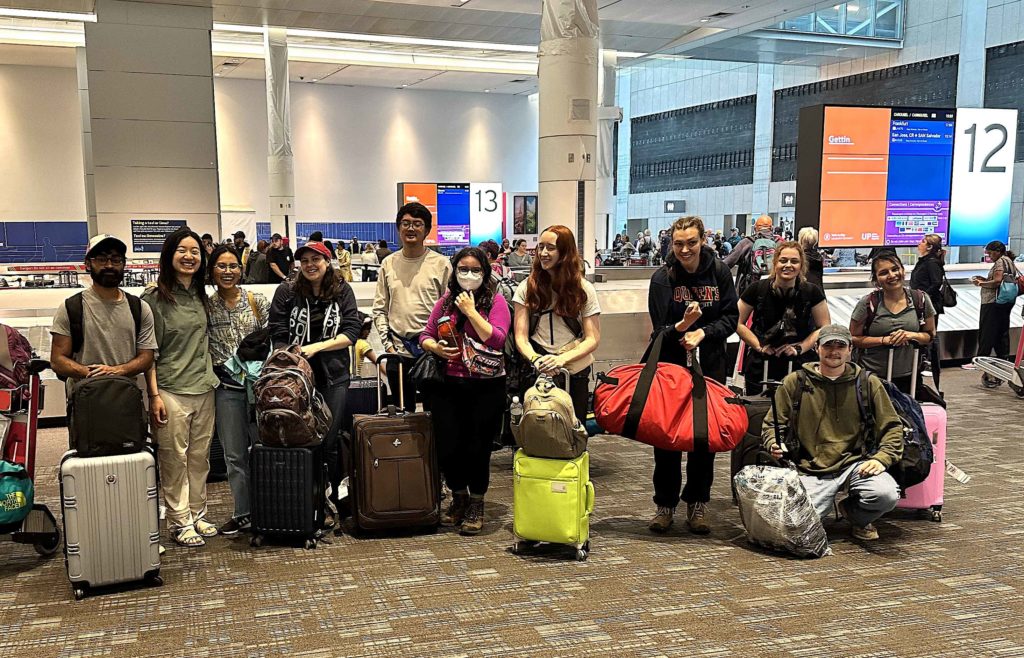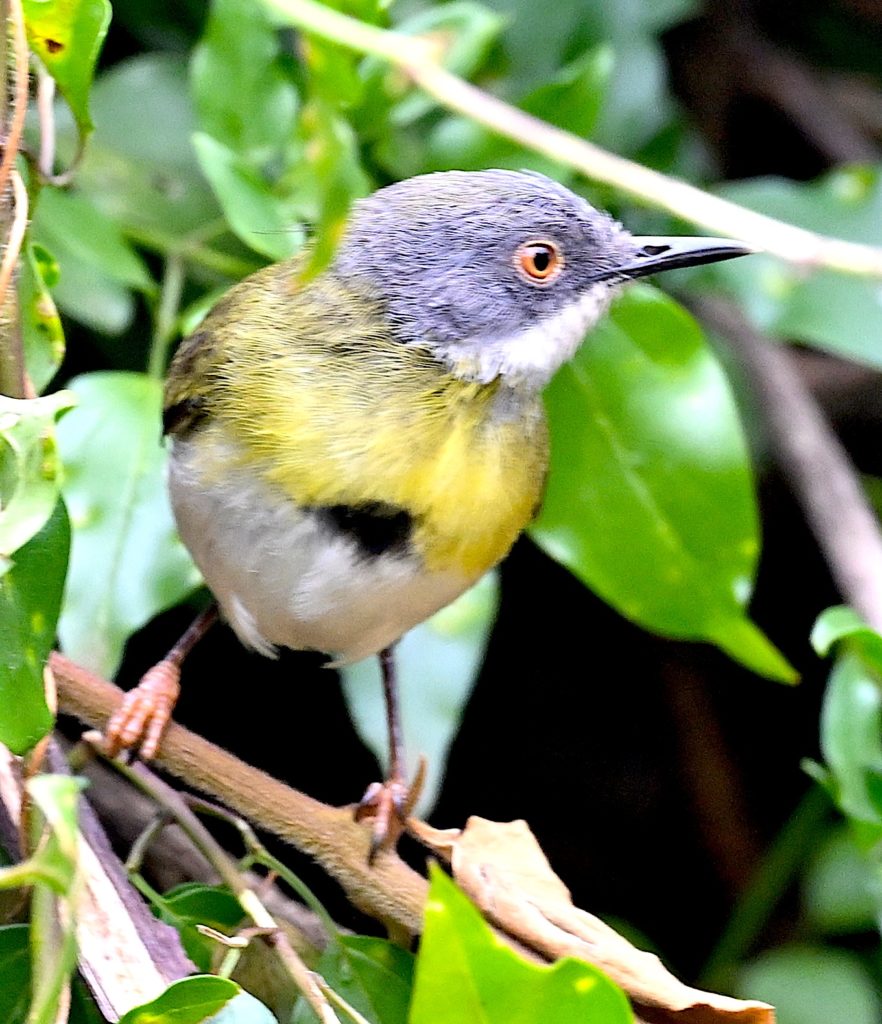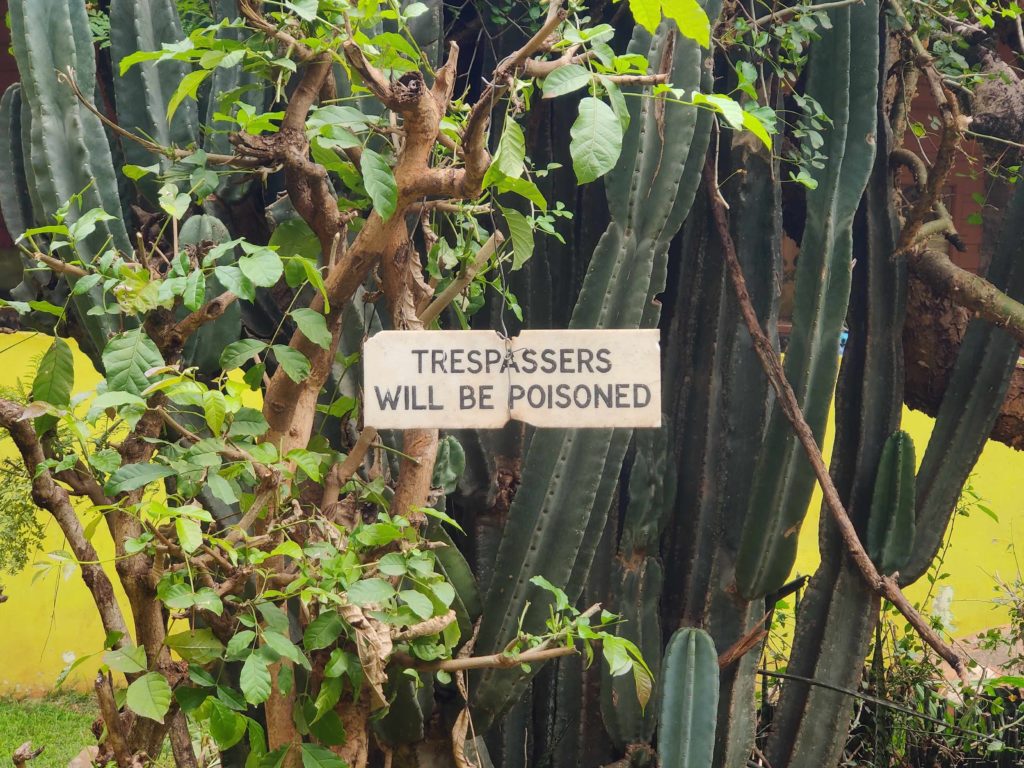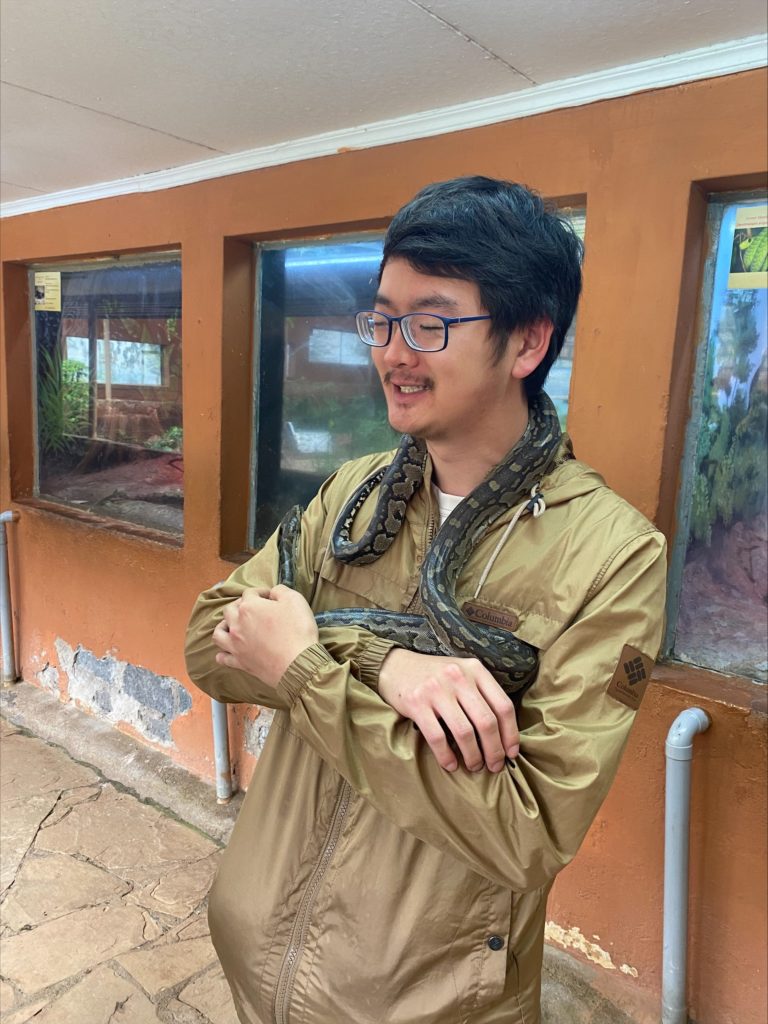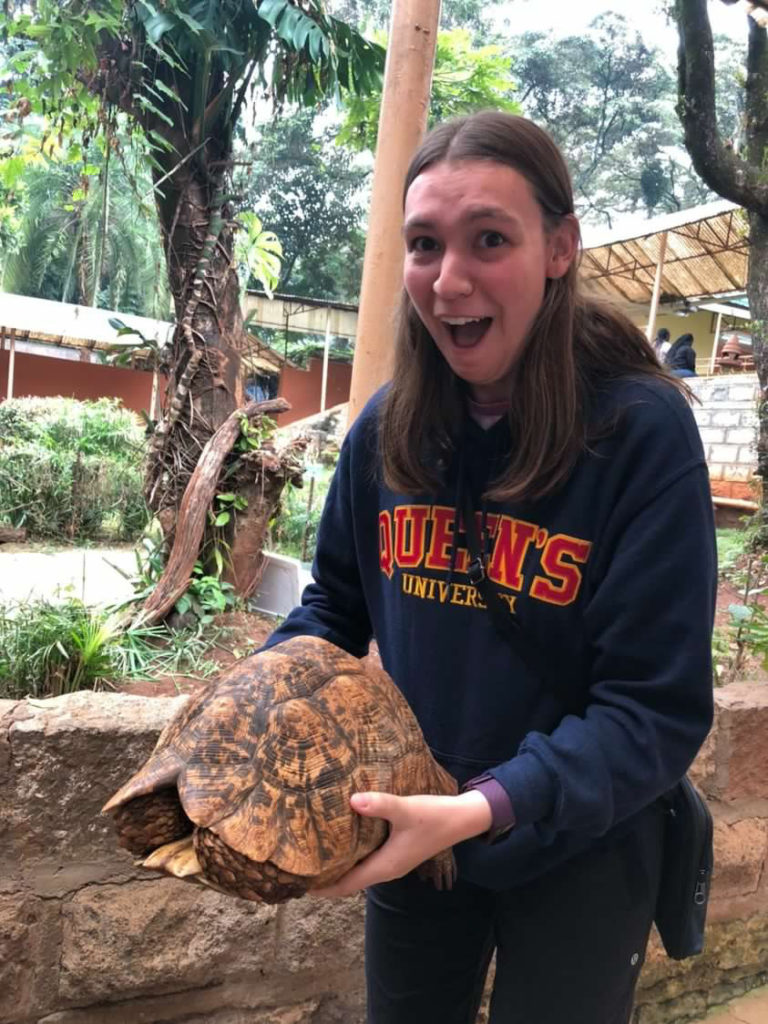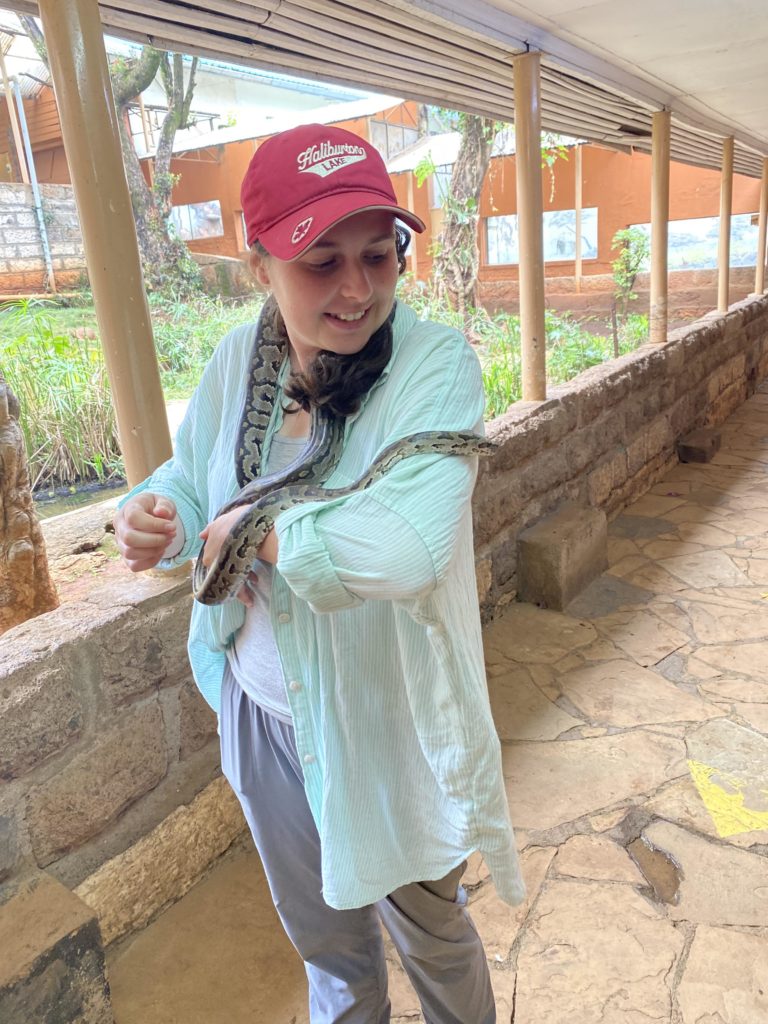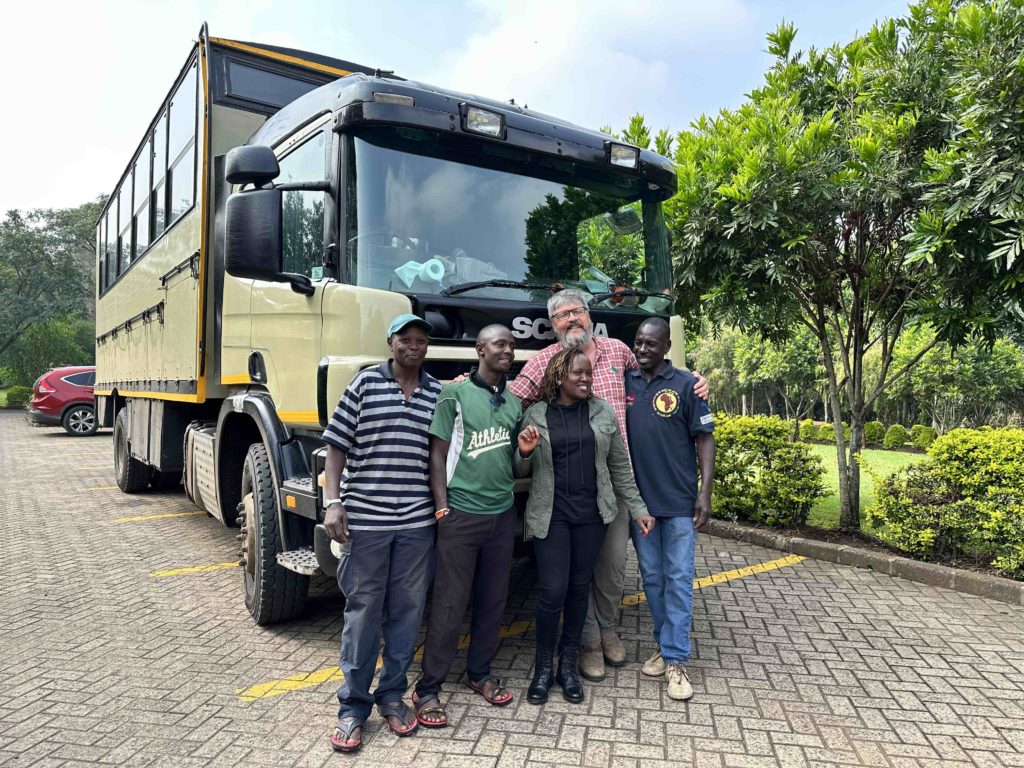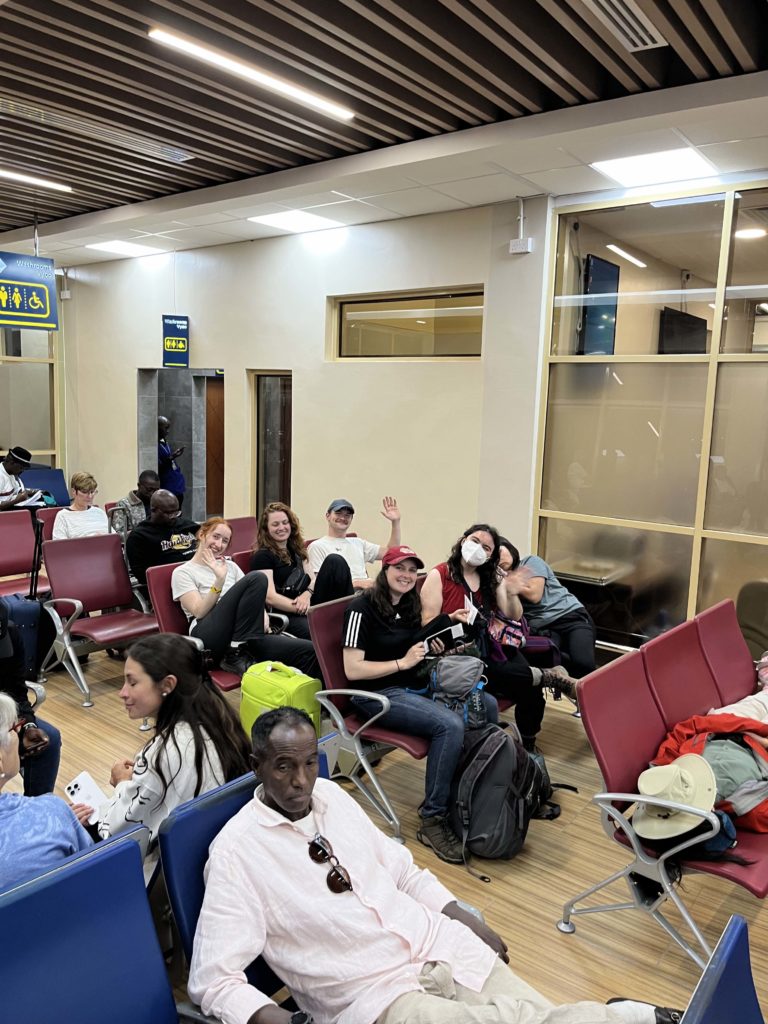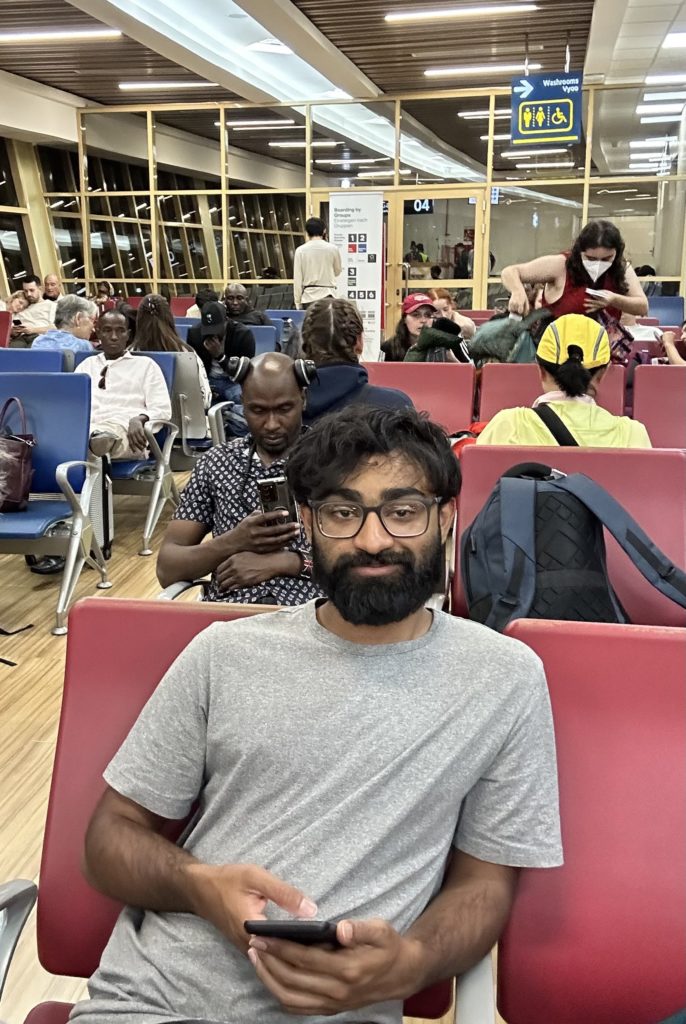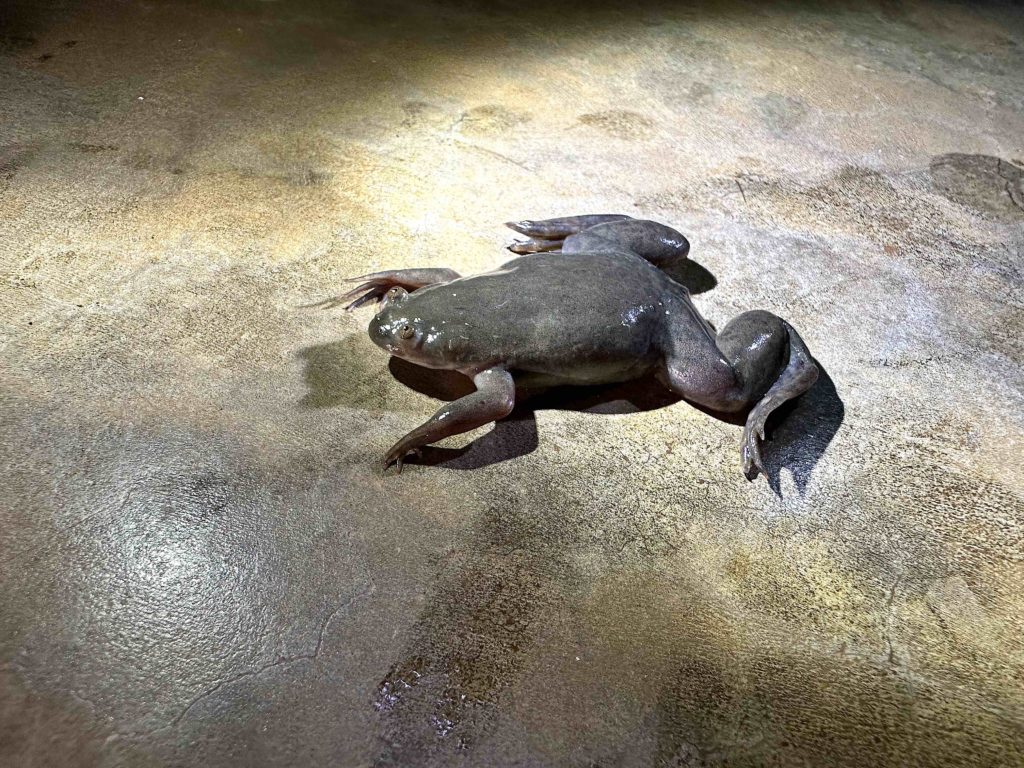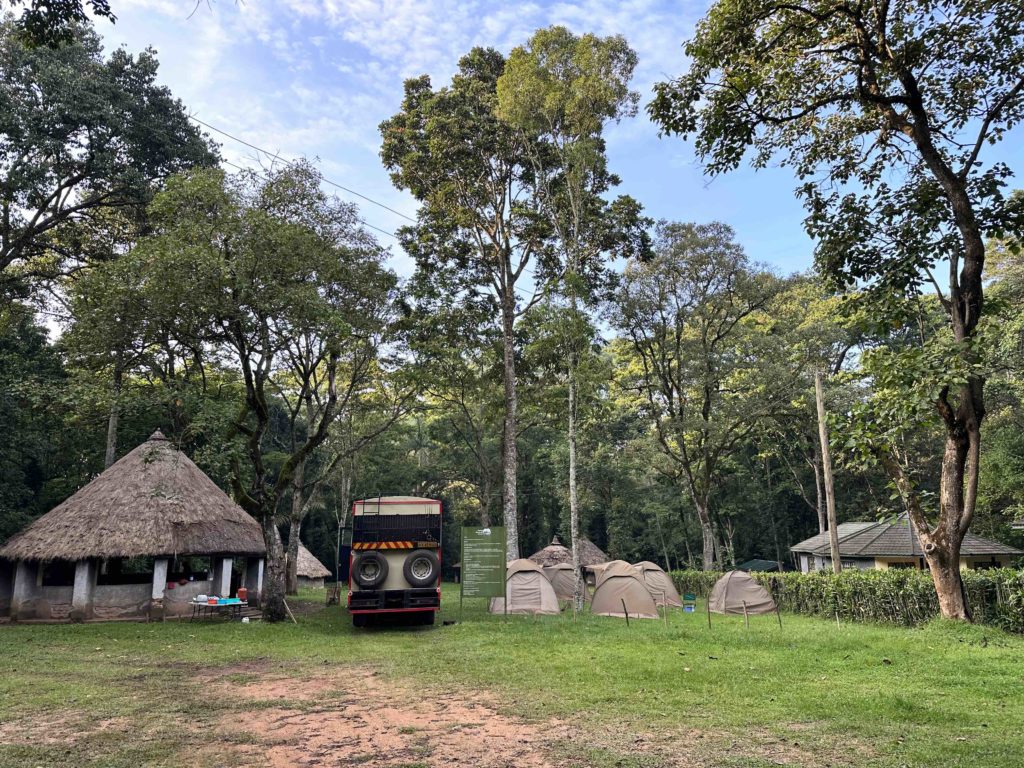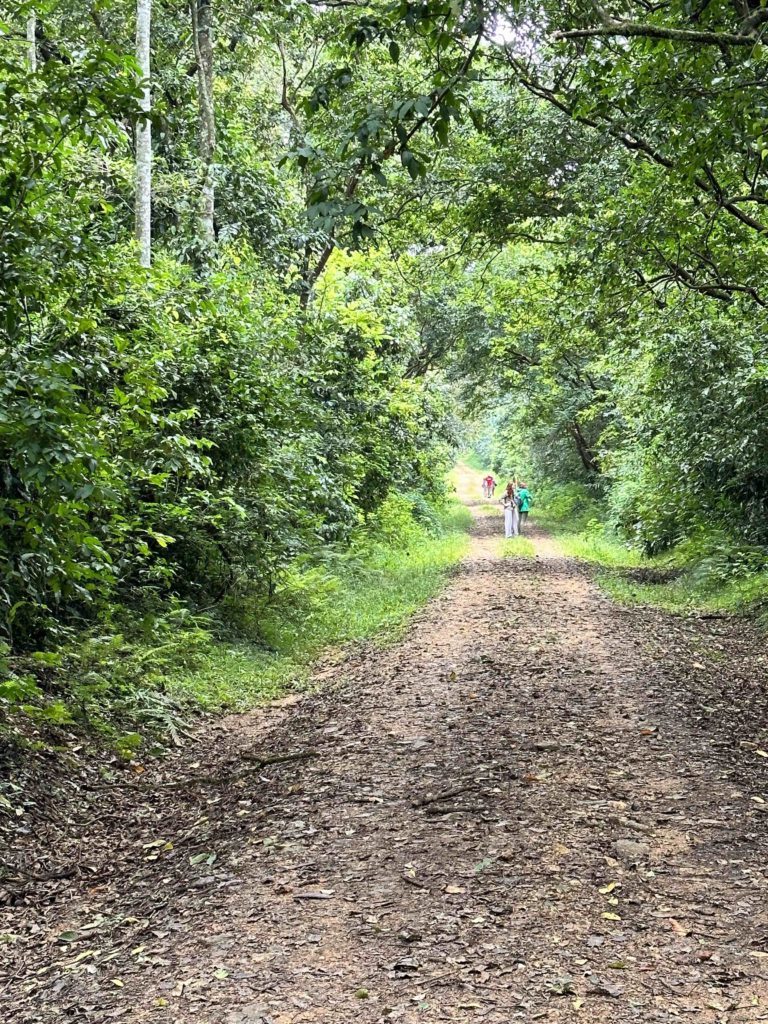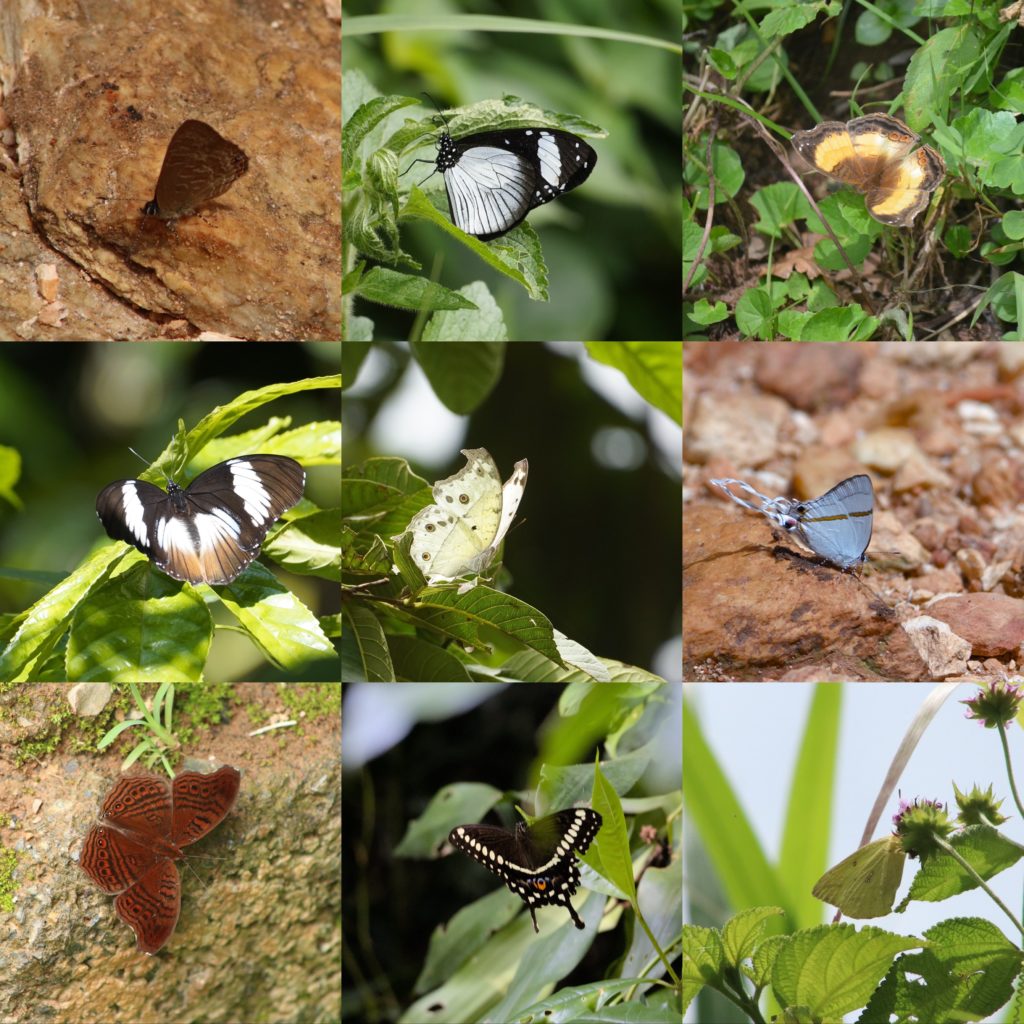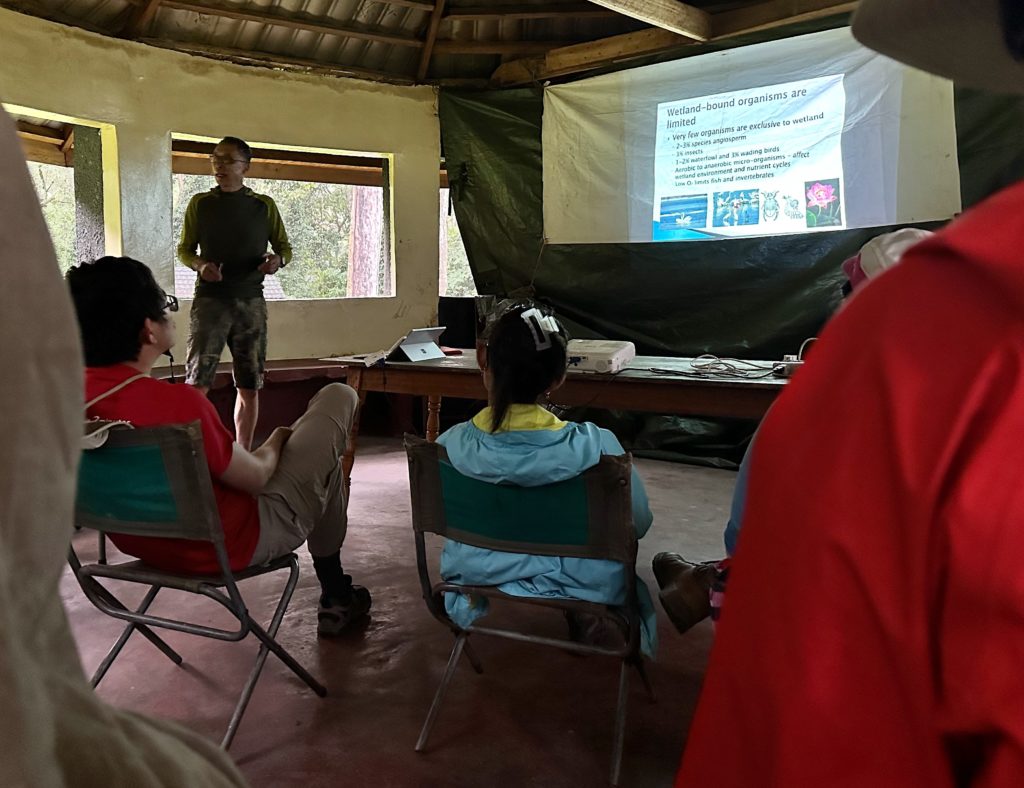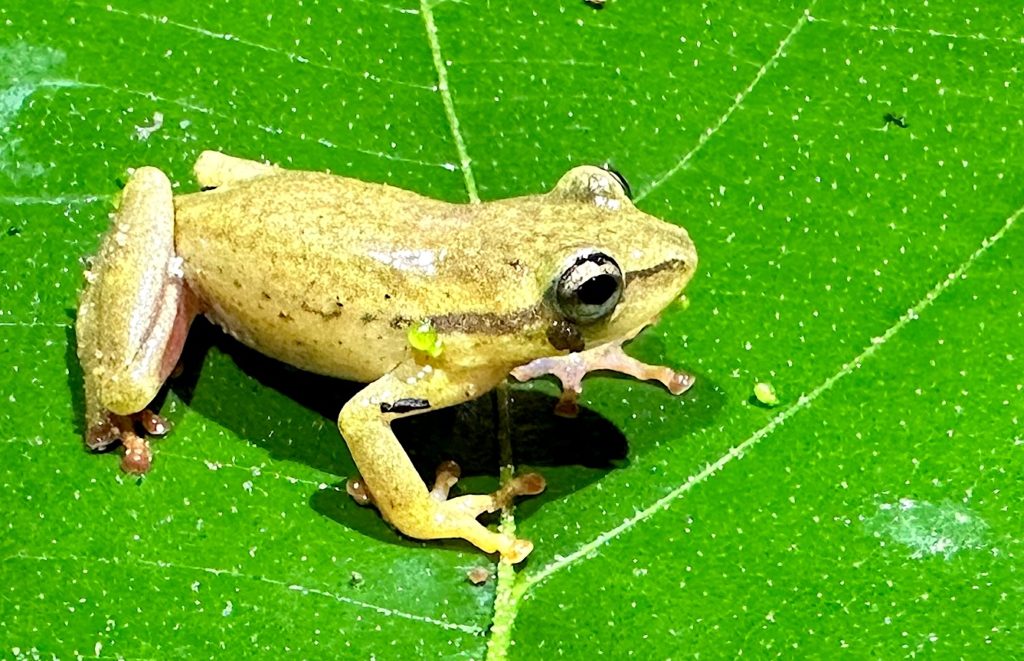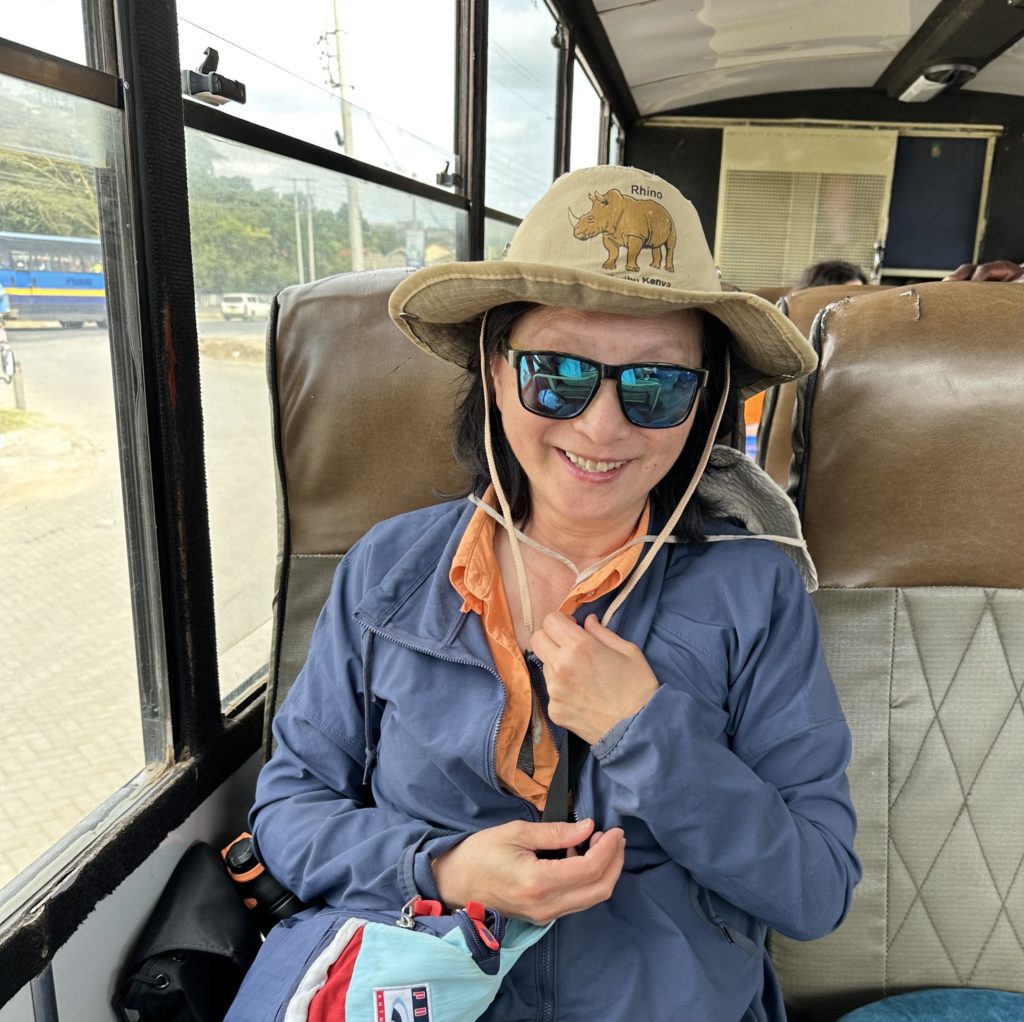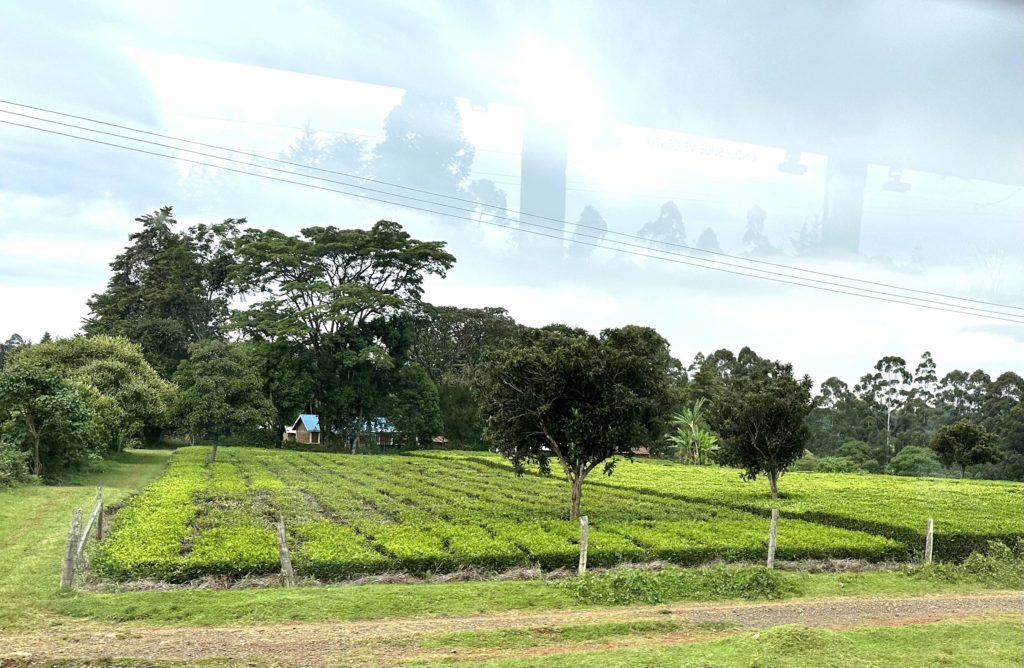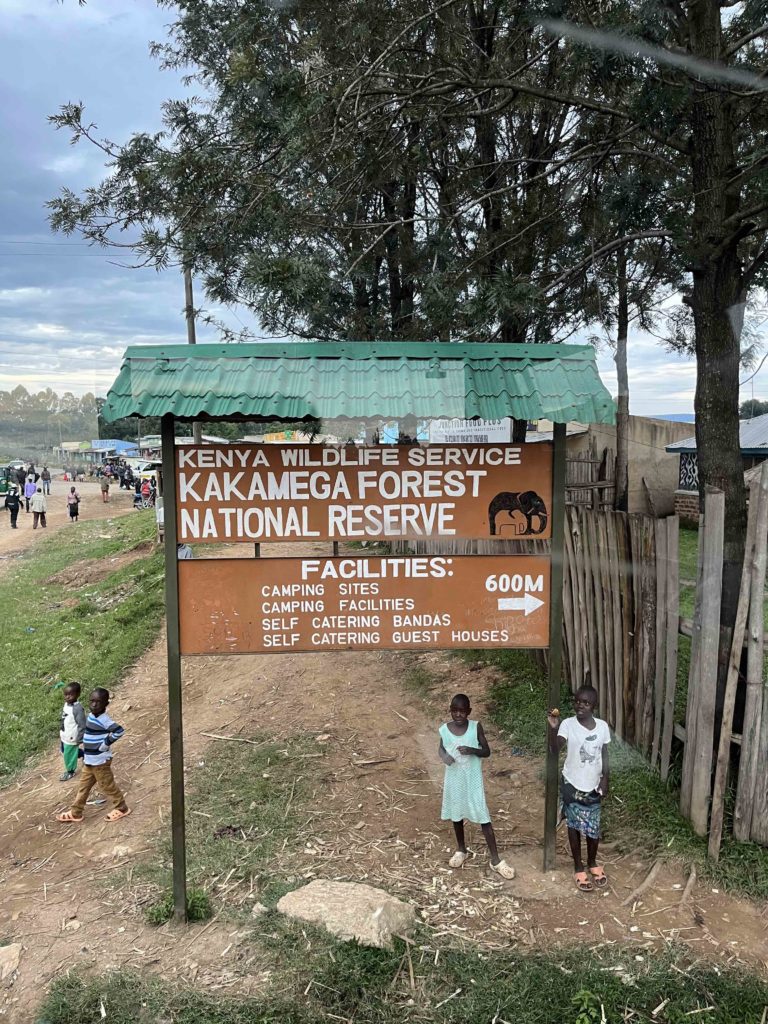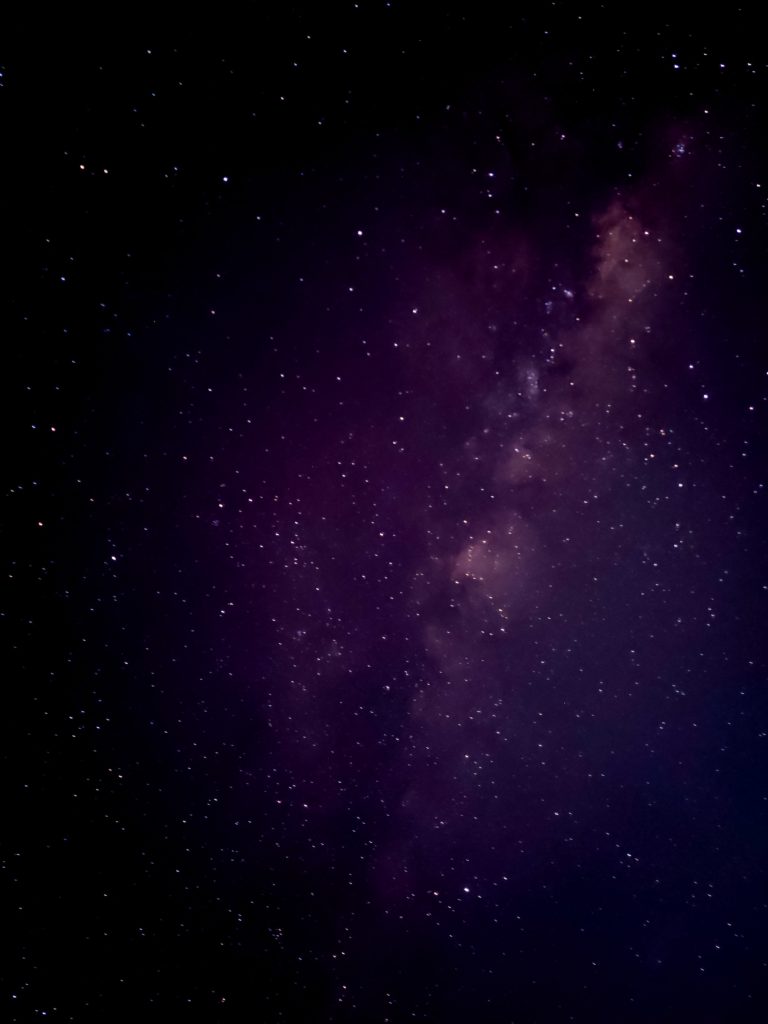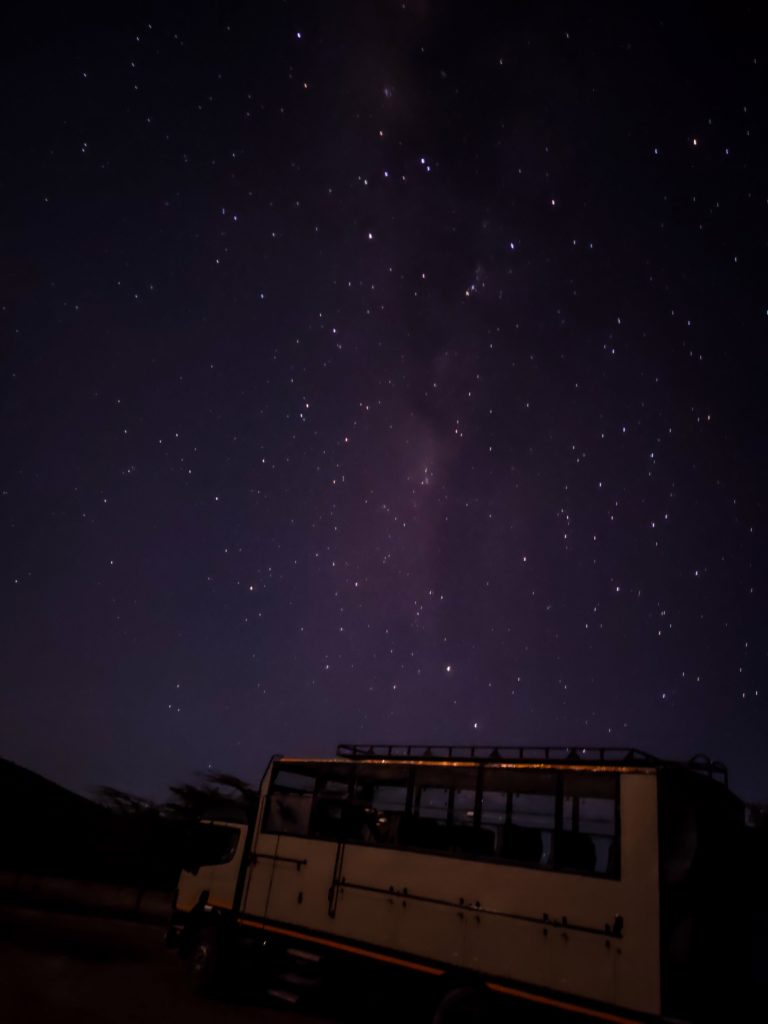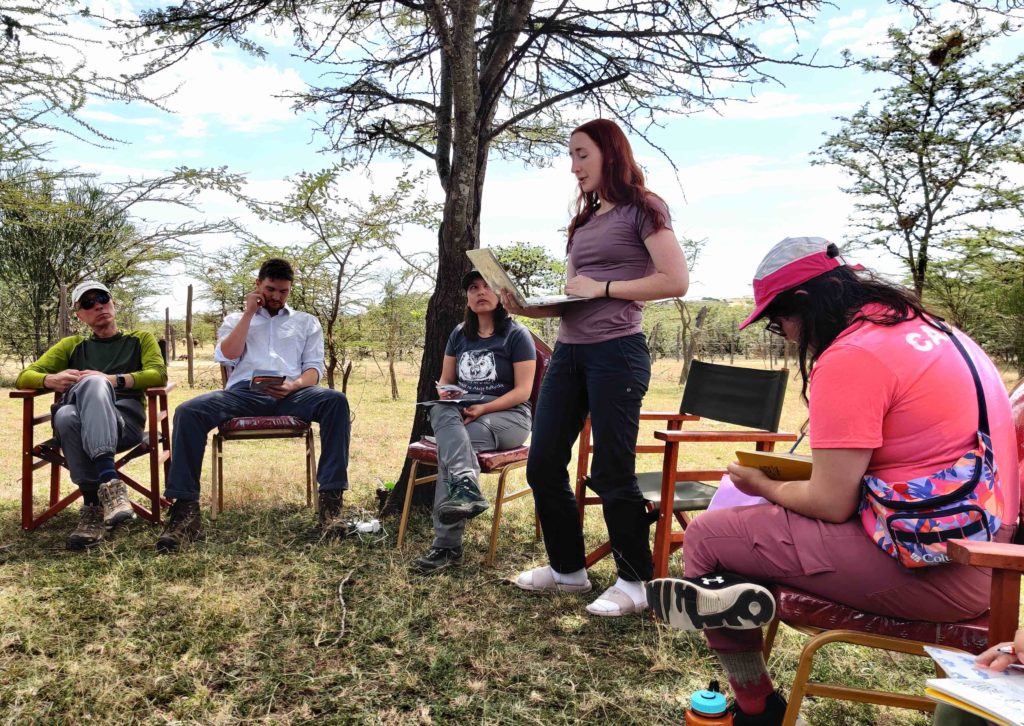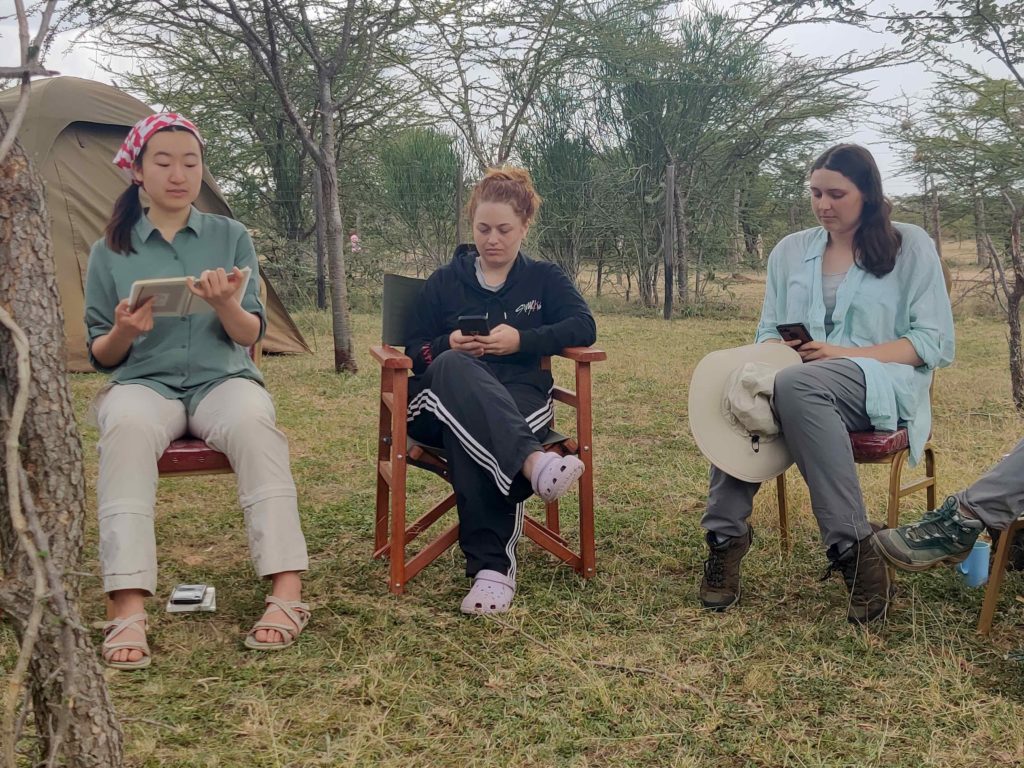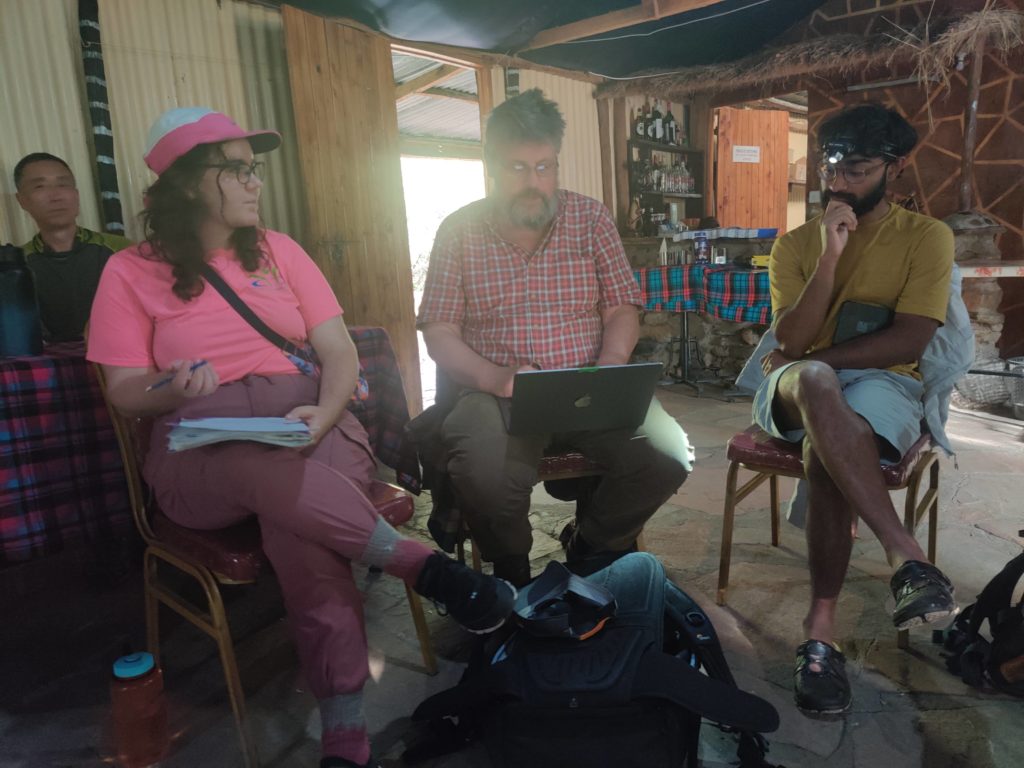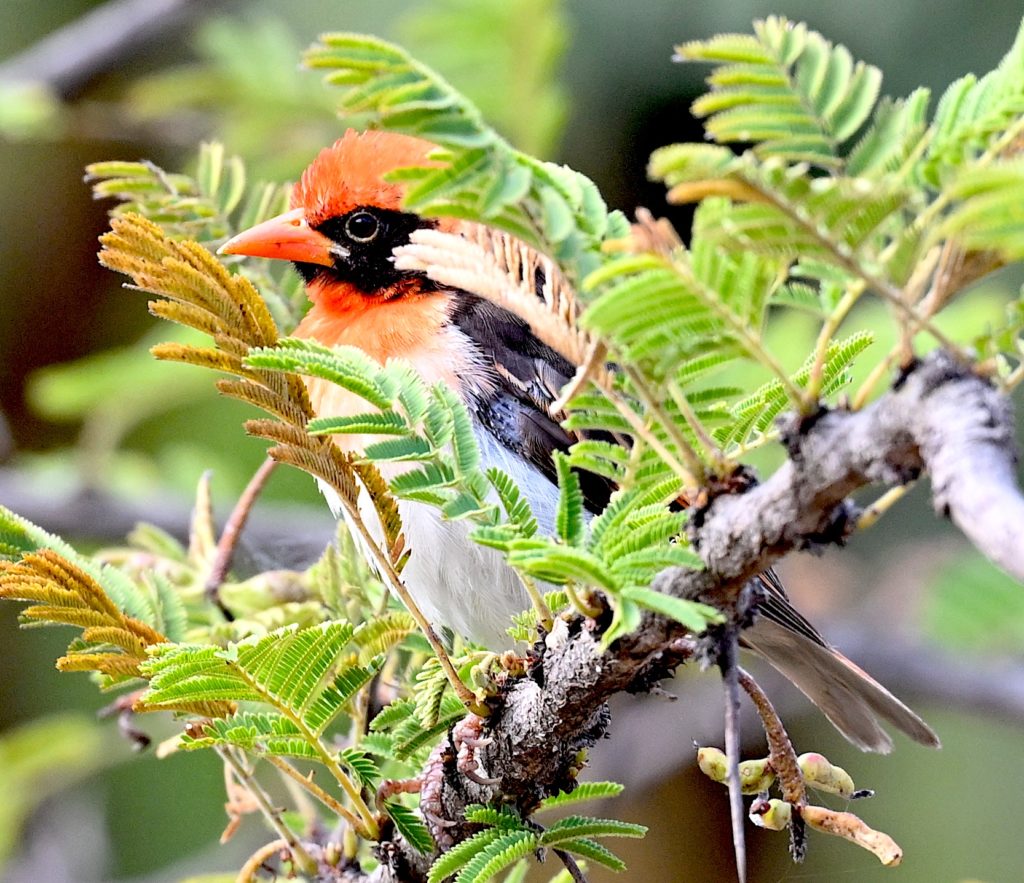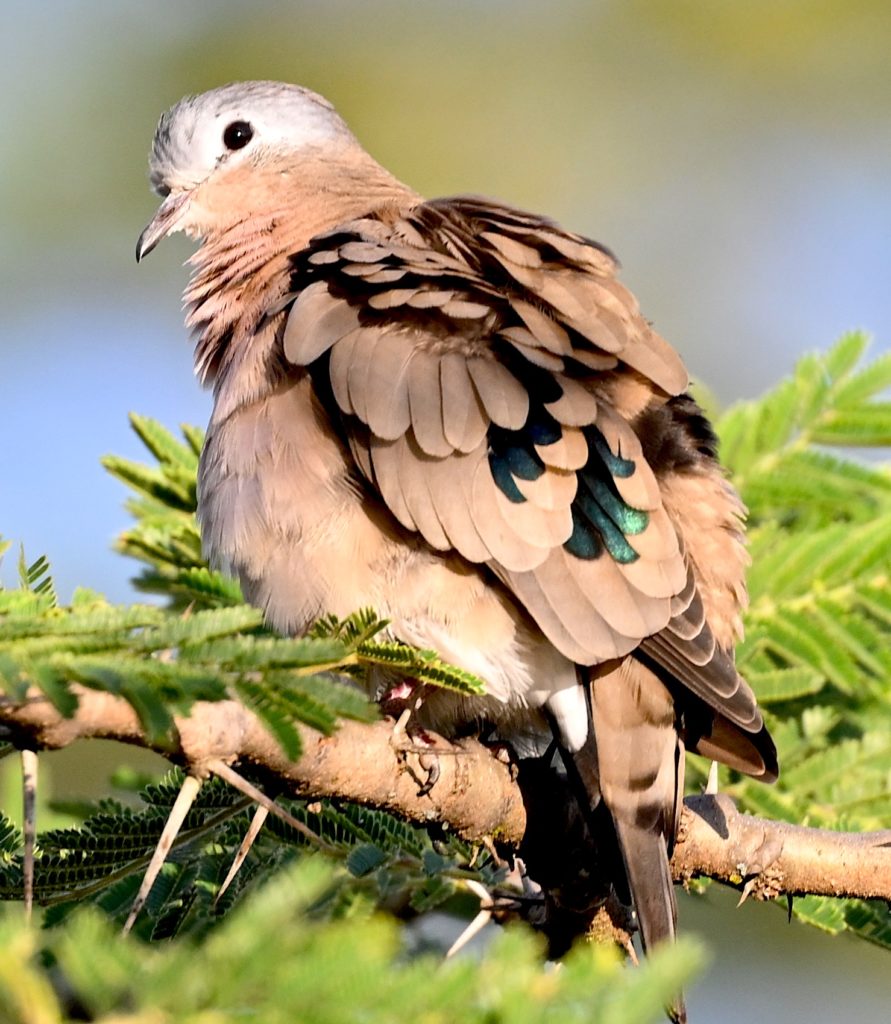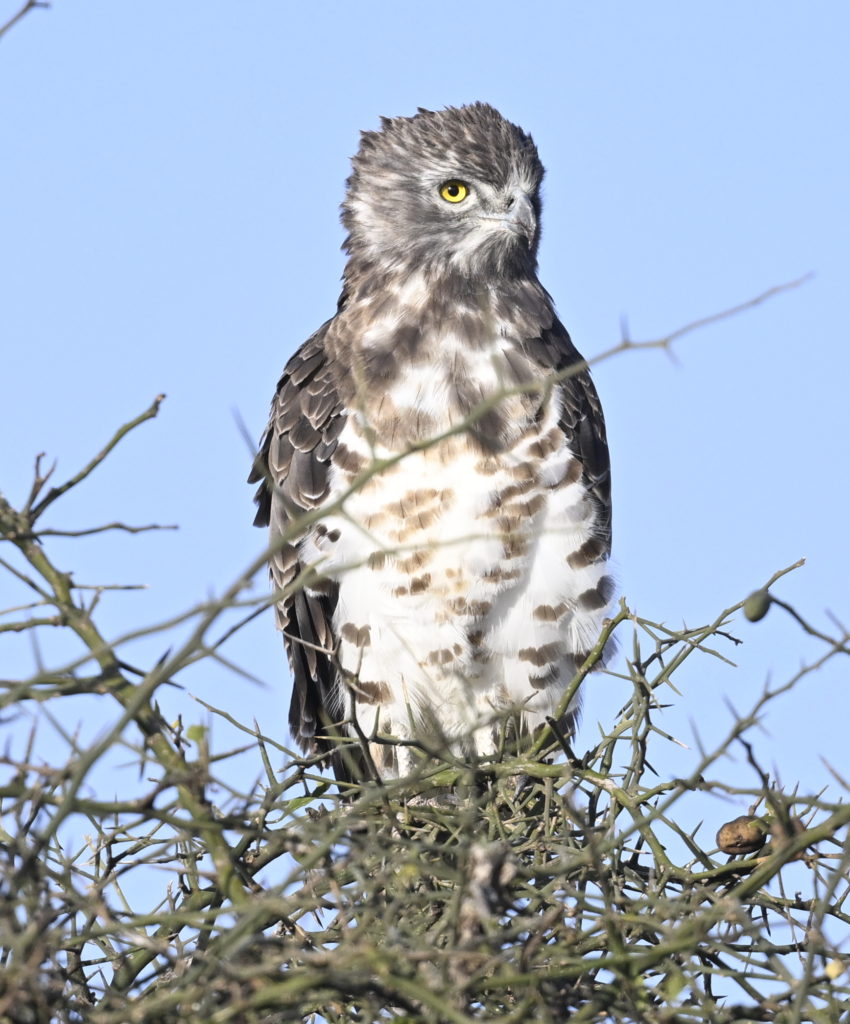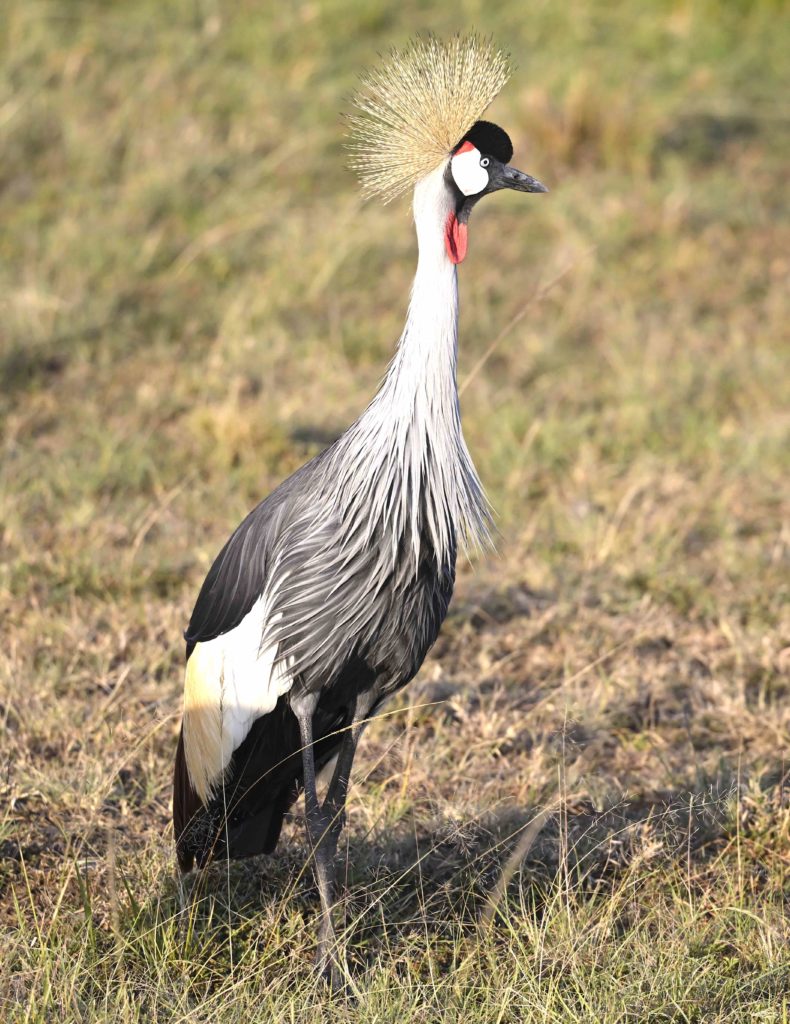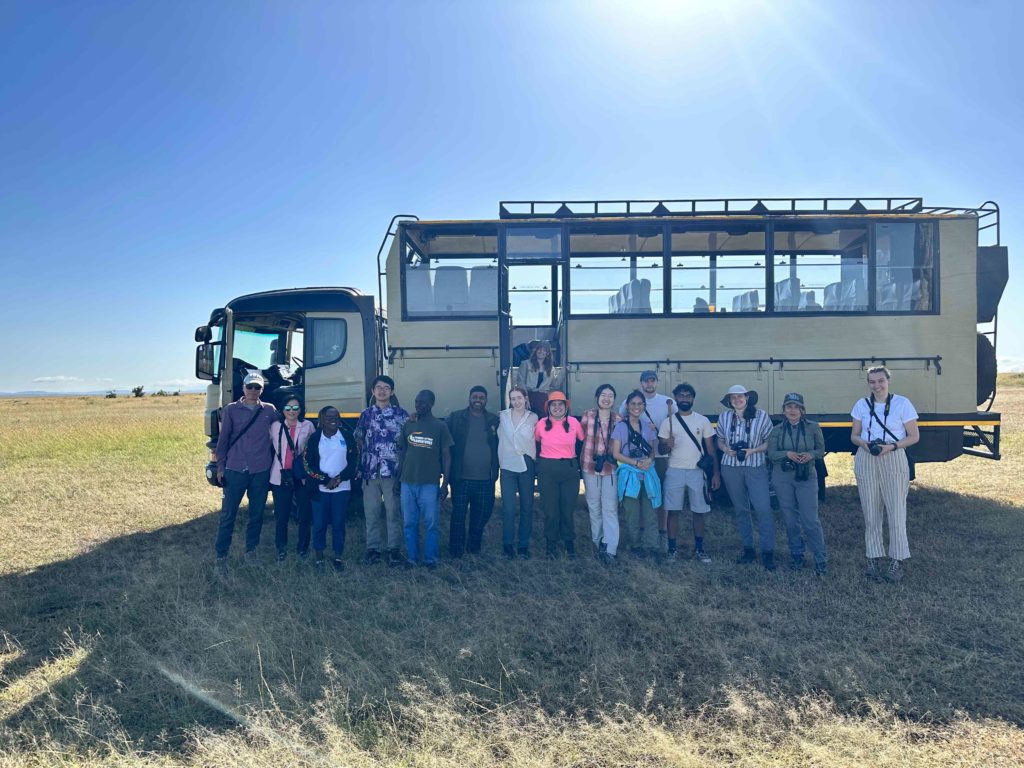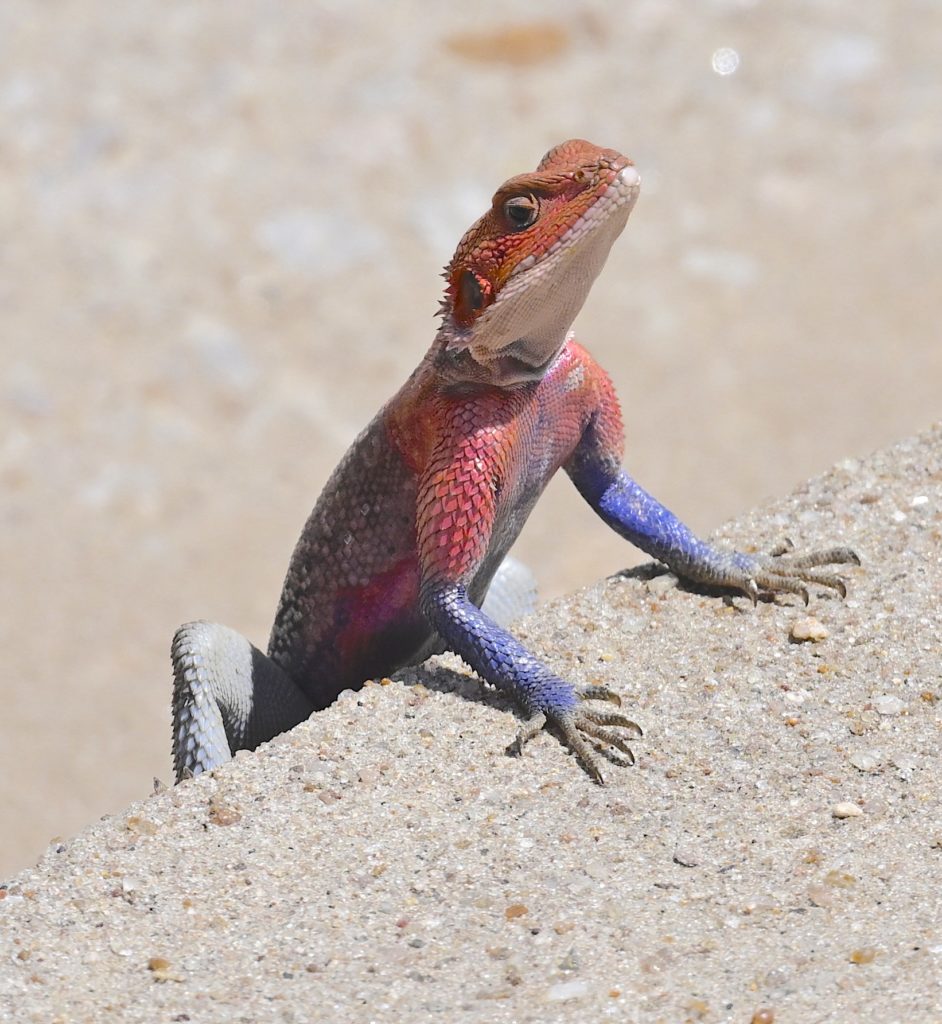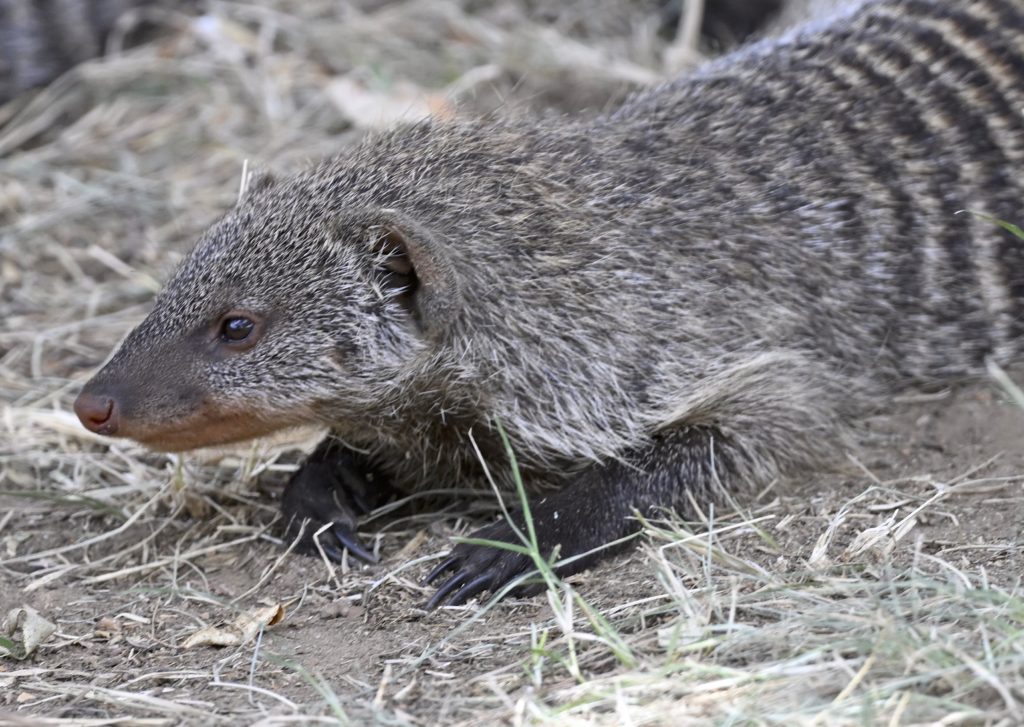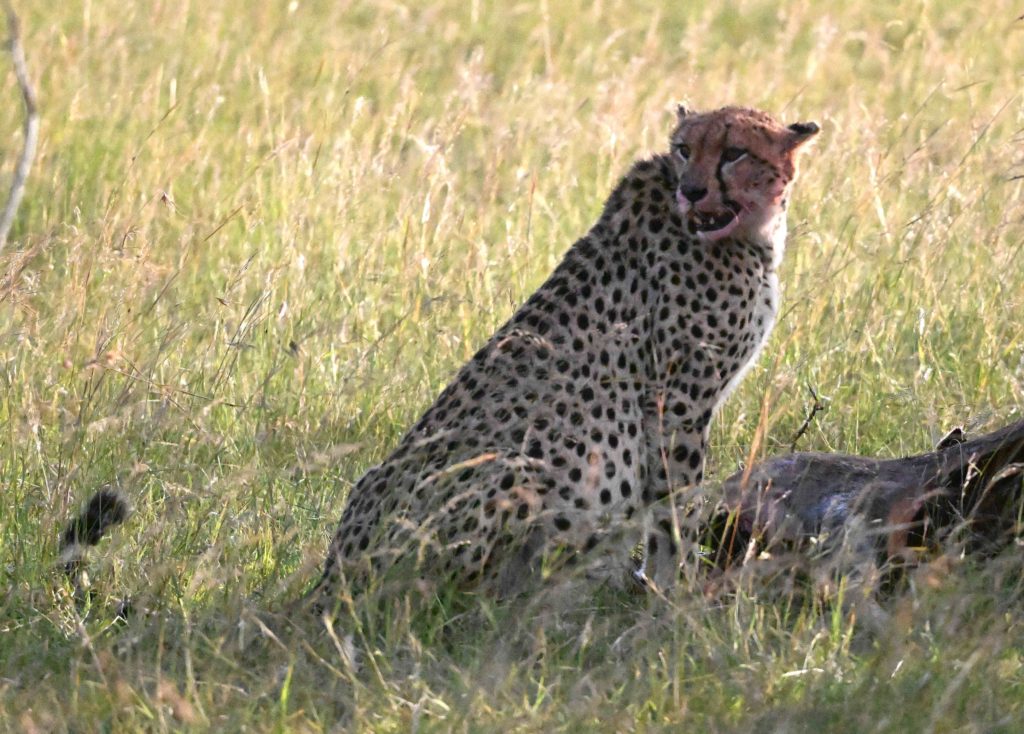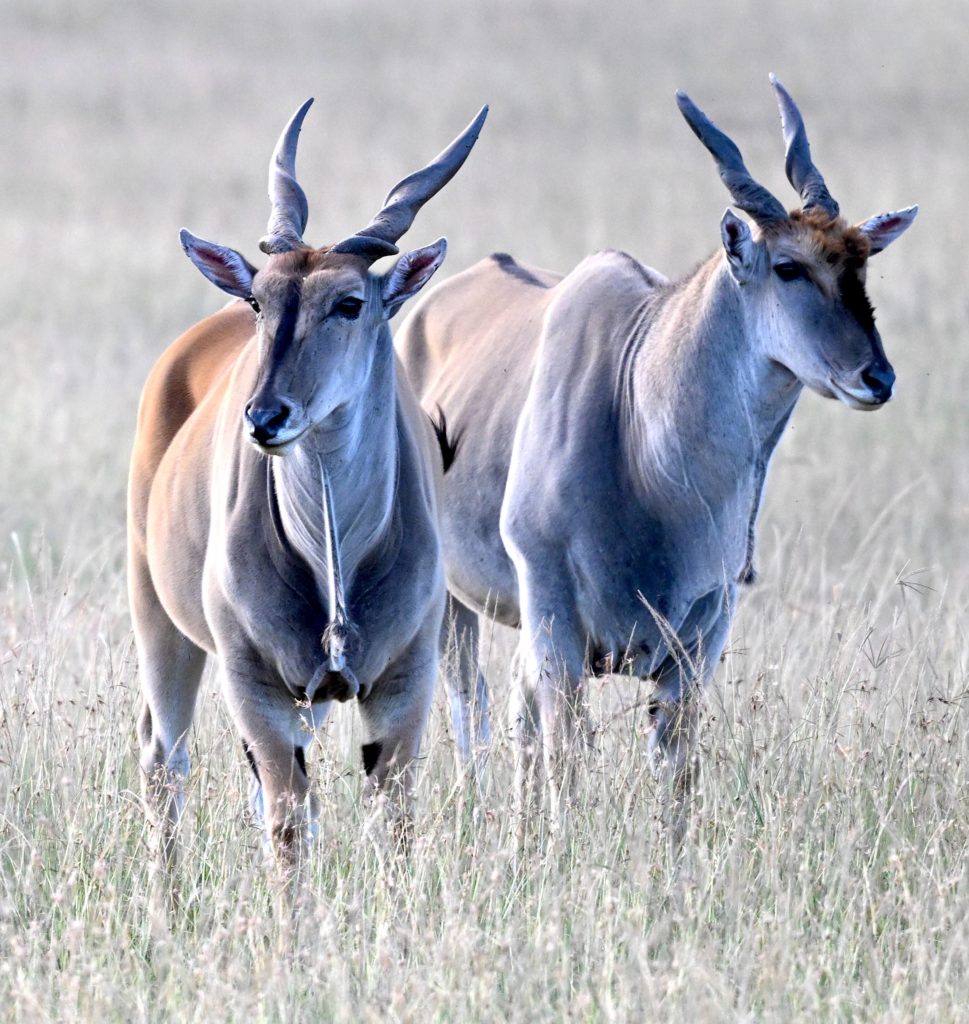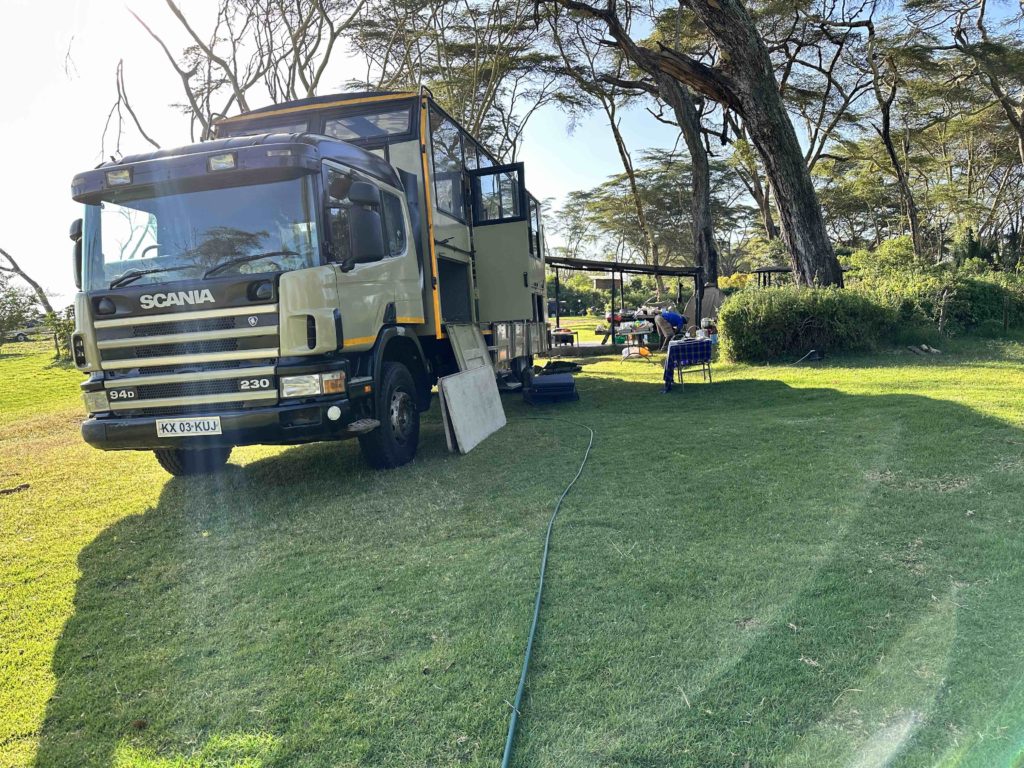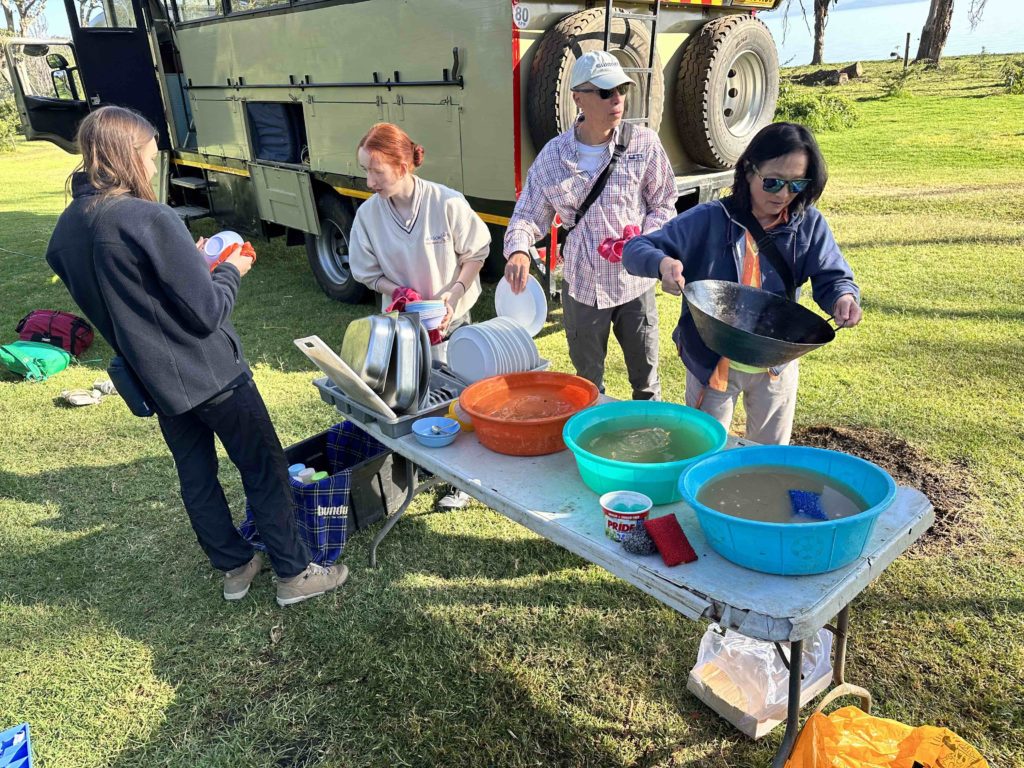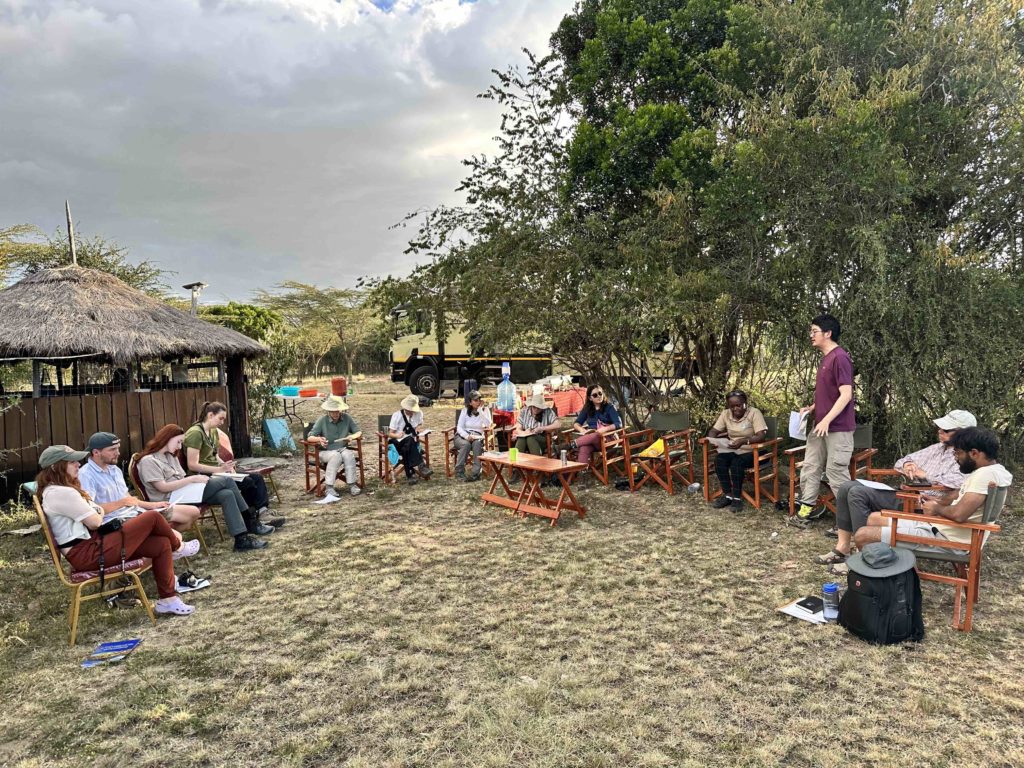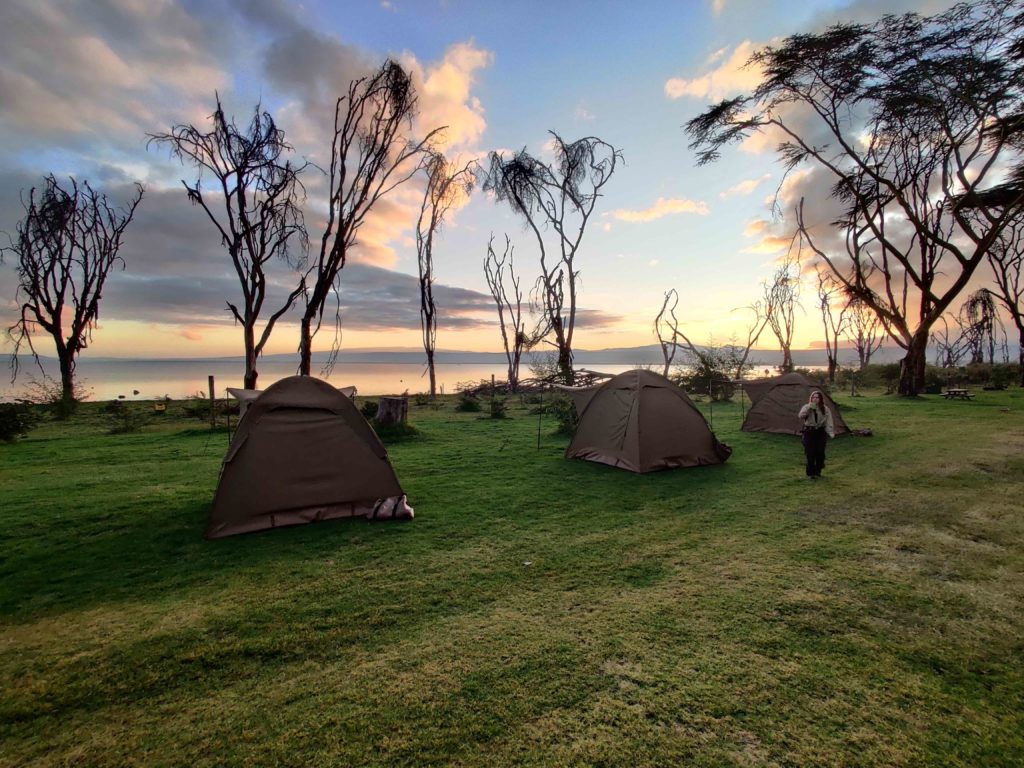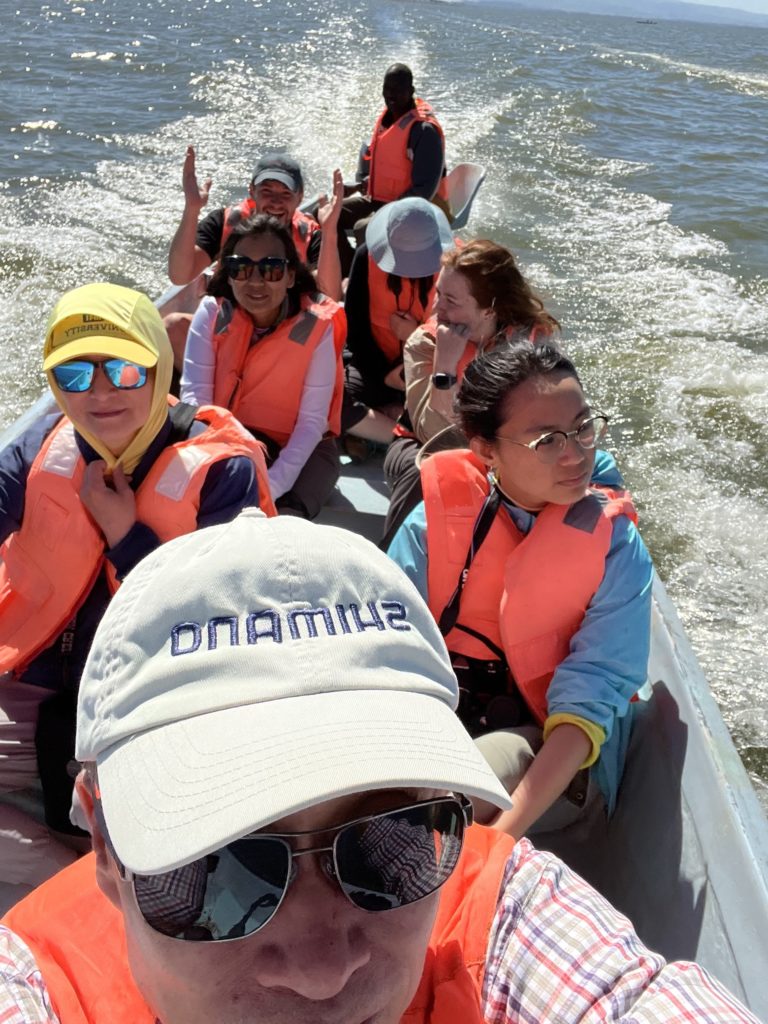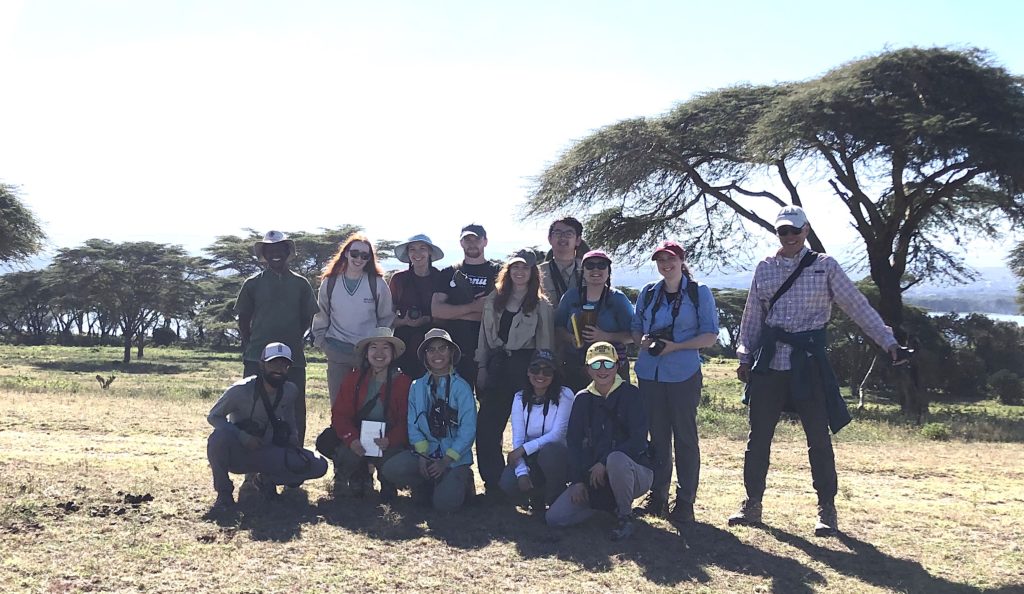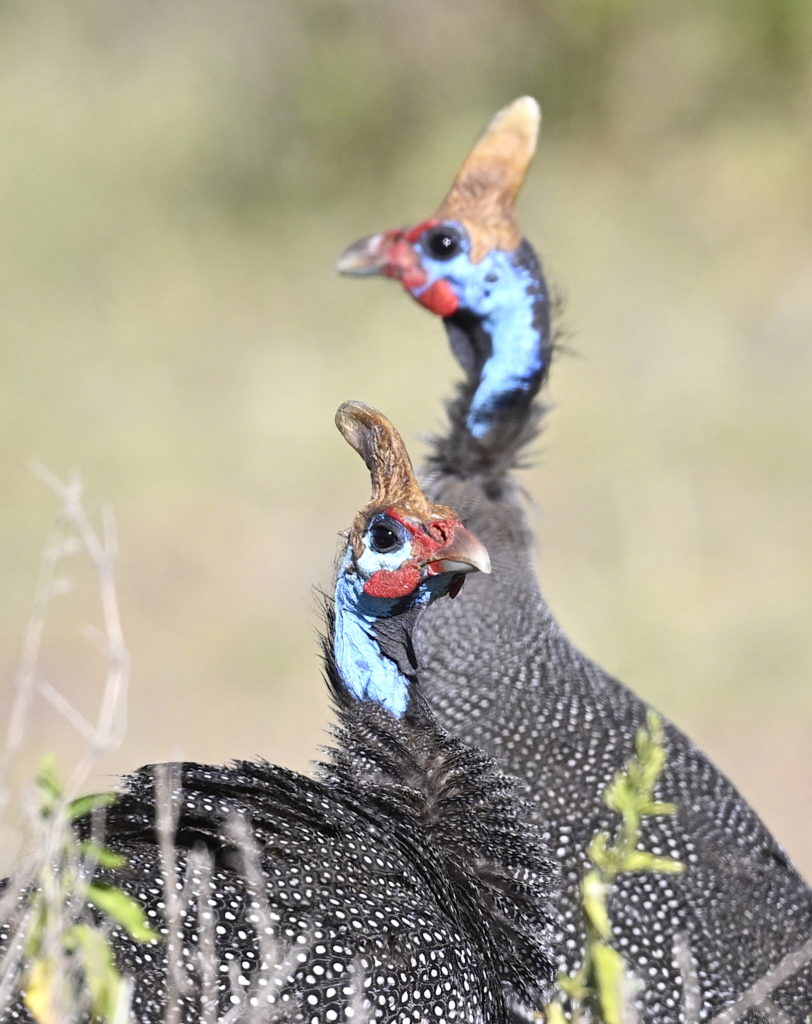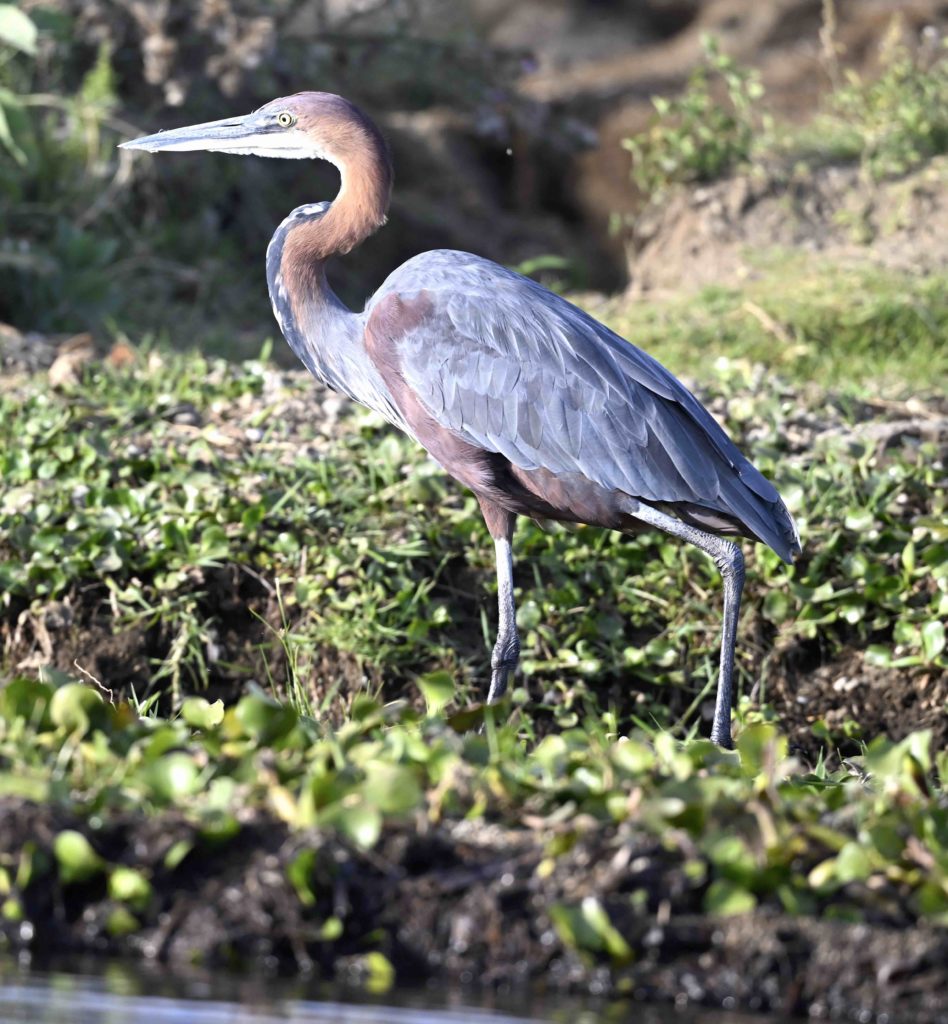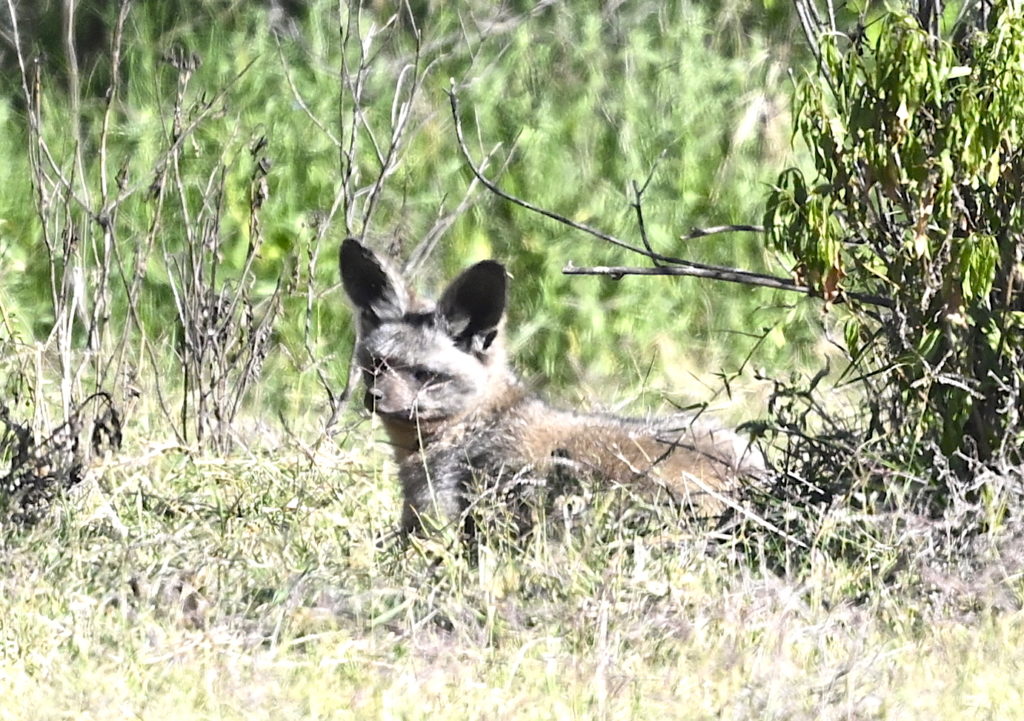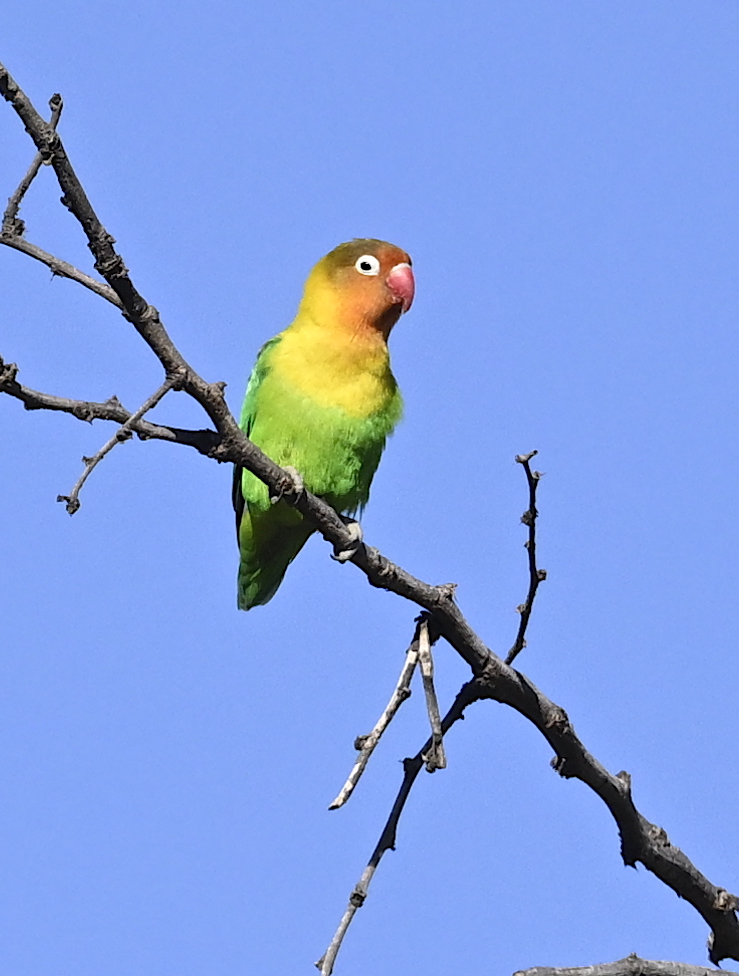Blog post 8. Arjun and Madeleine – June 12
We were greeted by the croaking of frogs as we left our tents this morning. We began our day with a 7 am bird walk in the tropical rain forest, led by our knowledgeable guide, Job. While pointing out birds and their songs to us, Job told us he has been birding since he was eleven years old and has seen over 900 of the 1200 bird species in east Africa. He showed us many birds, including a few endemic within Kenya to the Kakamega rain forest, such as the Brown-Eared Woodpecker, the Petite Cuckoshrike, and the Grey-Green Bushrike. We also heard the chattering and tittering of the Olive Green Cameroptera, the Yellow-Billed Barbet, and the Red-Tailed Bristle Bill, as well as the Blue-shouldered Robinchat, which mimics sounds it hears in the forest. Naturally, this was an exciting experience for expert and beginner birders alike. We even saw some primates— both human and non-human— climbing in the trees. (Include photo of Sol climbing tree.) Our morning hike helped us work up an appetite for yet another delicious breakfast prepared by the skilled Bunduz cooks.
Turning our eyes to the forest itself, Job led another fantastic hike after breakfast. We learnt about several species of trees, ferns, epiphytes, and fungi that make up the Kakamega tropical rain forest. Ginger plants carpeted the forest floor. Dracina fragrens, a common house plant in Canada and native here in Kakamega, dominated the understory along the trail and in forest openings. Polyscias fulva and Ficus lutea were common species forming the forest canopy. From the forest floor to the canopy and everything in between, we saw the components that make tropical rainforest ecosystems so diverse— structurally and biologically— and so distinct from the temperate forests we’re used to seeing back home. Each part of the forest plays an integral role in the ecosystem, such as habitat structure, productivity, and nutrient cycling. We saw massive buttress roots adorning large trees and learnt that, due to the relatively nutrient-poor soil, large trees have shallow root systems so they require buttresses to remain anchored to the soil. These buttress roots provide habitat for mosses and vascular epiphytes— and make a great place for a photo shoot! Even trees that have fallen down play an important role; in a tree gap (an area where a large tree had fallen and has taken down several other plants), Steve stopped to tell us about the importance of tree gaps for early successional plant species and certain bird species due to the light that makes it through the dense forest to the forest floor. We saw several butterfly species, including Blue mother of pearl, Forest mother of pearl, and Green-backed swallowtail. The herpetologists in the crowd were also excited to see a Jackson’s tree lizard— a nice primer for the night herping hike this evening. On this hike, Job and Carol also pointed out tree species that have economic and medicinal properties for local communities, including Antiaris toxicarius and Olea capensis, which are used to treat various illnesses, and several species of trees with edible fruits, like Gambea albera. This hike perfectly complemented lectures Steve gave about patterns and hypotheses of biodiversity and why the tropics are such a diverse area.
Highly anticipated by many (but especially Meg), after dinner we donned our headlamps and headed out for a nighttime herpetology walk. Job took us to a nearby pond to find frogs, and it was a huge success! We caught several tree frogs (appropriately enough, calling from trees), Hyperolius viridiflavus viridiflavus, and a bullfrog, Hoplobatrachus occipitalis. Alyssa performed an impressive balancing act to catch a Lake Victoria clawed frog from the pond. Much fun was had by all, and Madeleine and Alyssa enjoyed seeing the similarities and difference between these African frogs and the frogs they study in Canada. This was a perfect end to a very full day!
Seeing so many plant, fungal, insect, and herpetofaunal species today has made us reflect on the charismatic megafauna bias in conservation, where certain animals (particularly large mammals) receive disproportionate conservation effort and funding. Though we were all excited to see the elephants, lions, and cheetahs, we must not forget about the plants, amphibians, reptiles, invertebrates, and fungi that play essential roles in several ecosystems and are also worthy of conservation efforts. We reflect on this as we fall asleep under the forest canopy, surrounded by the croaking and chirping of frogs and insects.
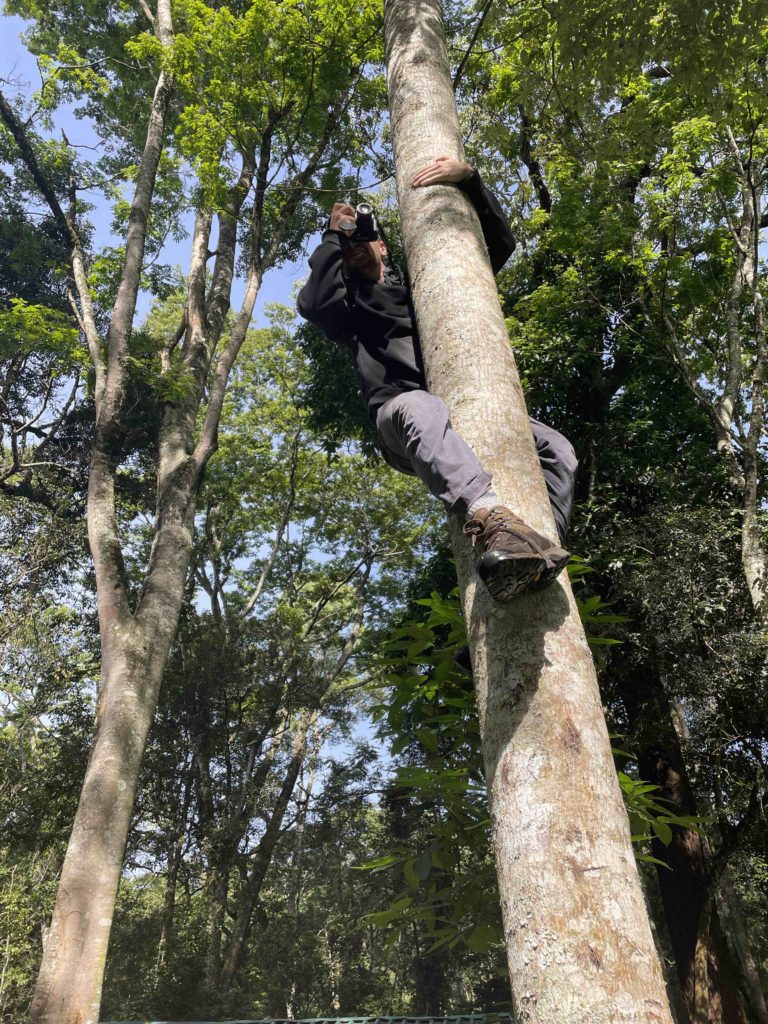
Primate in tree with camera
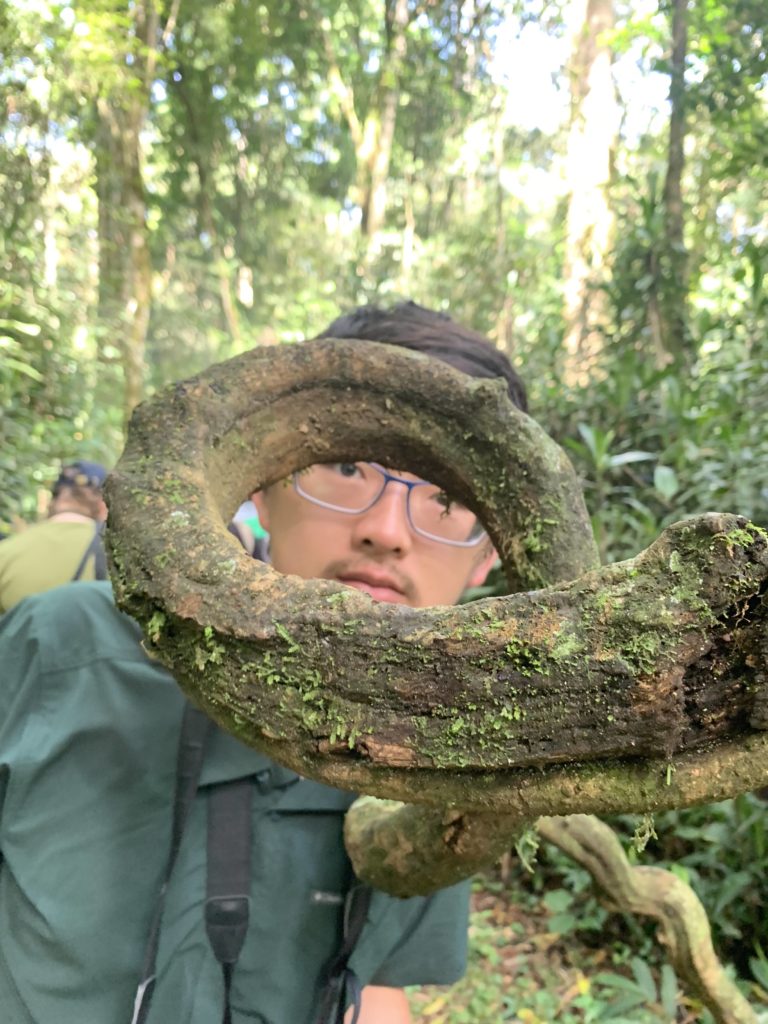
Allen’s face framed by loop in liana stem
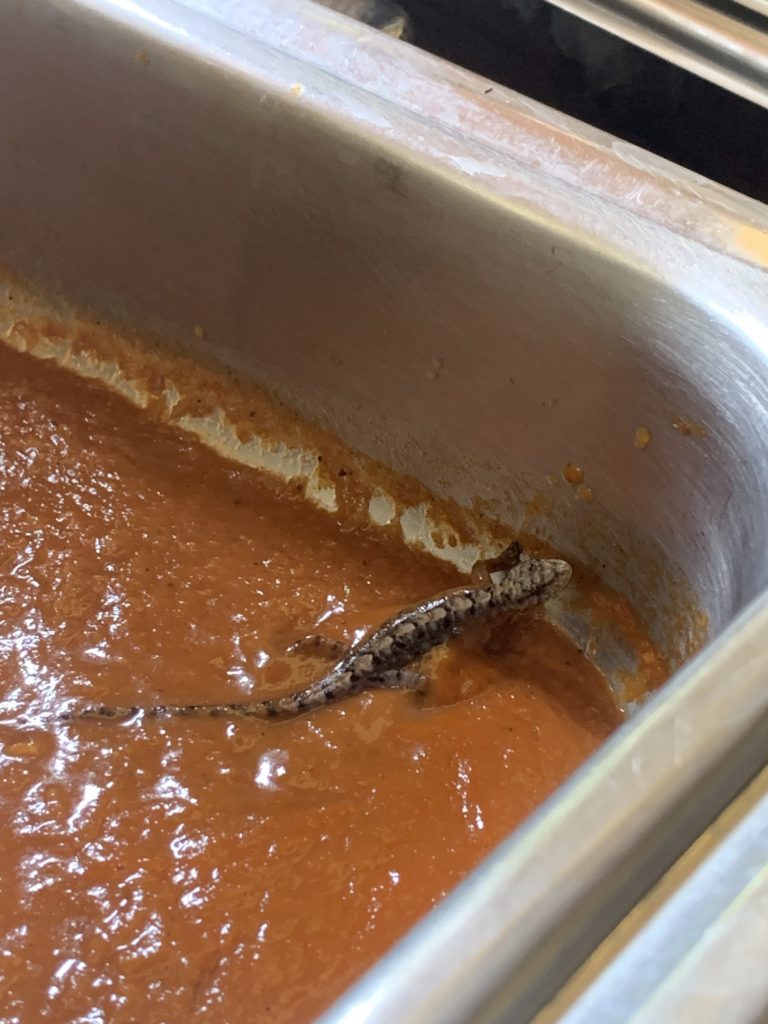
Lizard in the sauce – an added flavour
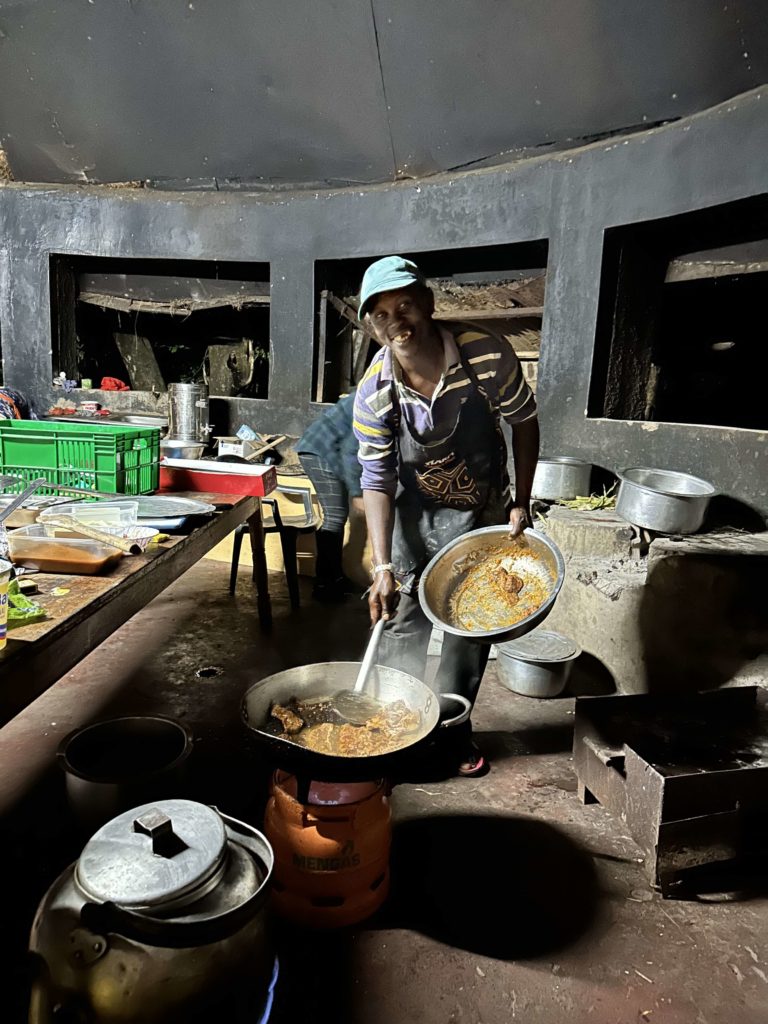
John the second, our amazing Bunduz head chef
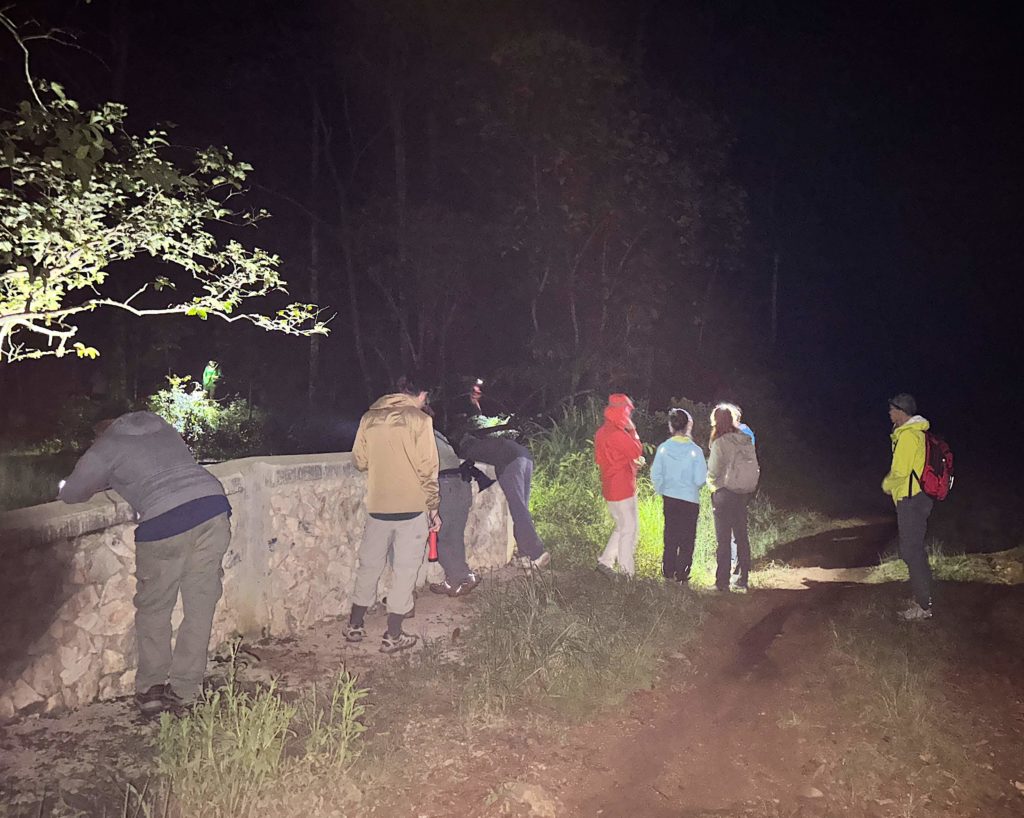
Night walk – searching for amphibians
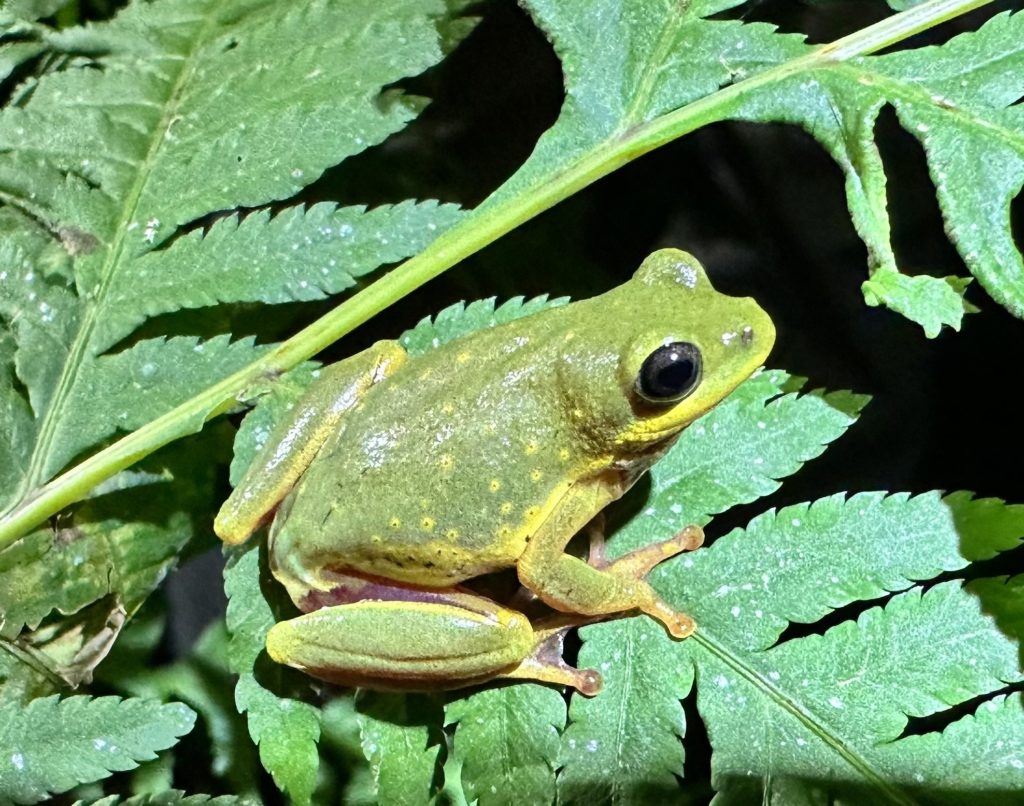
Common reed frog subspecies common in Kakamega
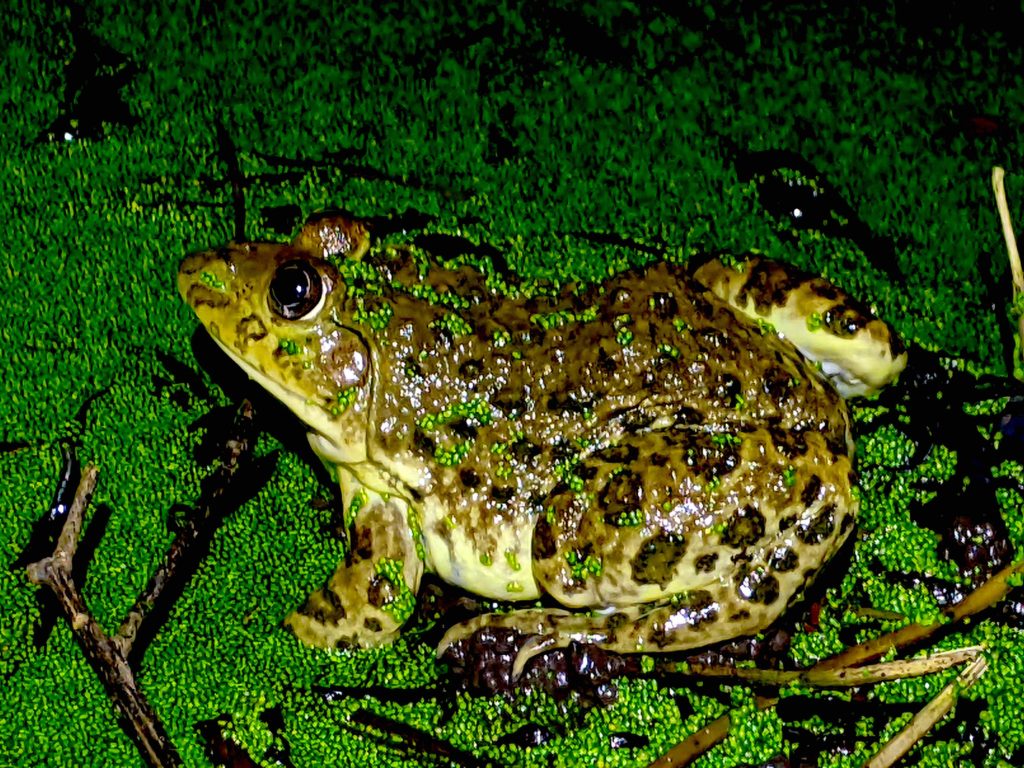
Eastern groove-crowned bullfrog, Hoplobatrachus occipitalis
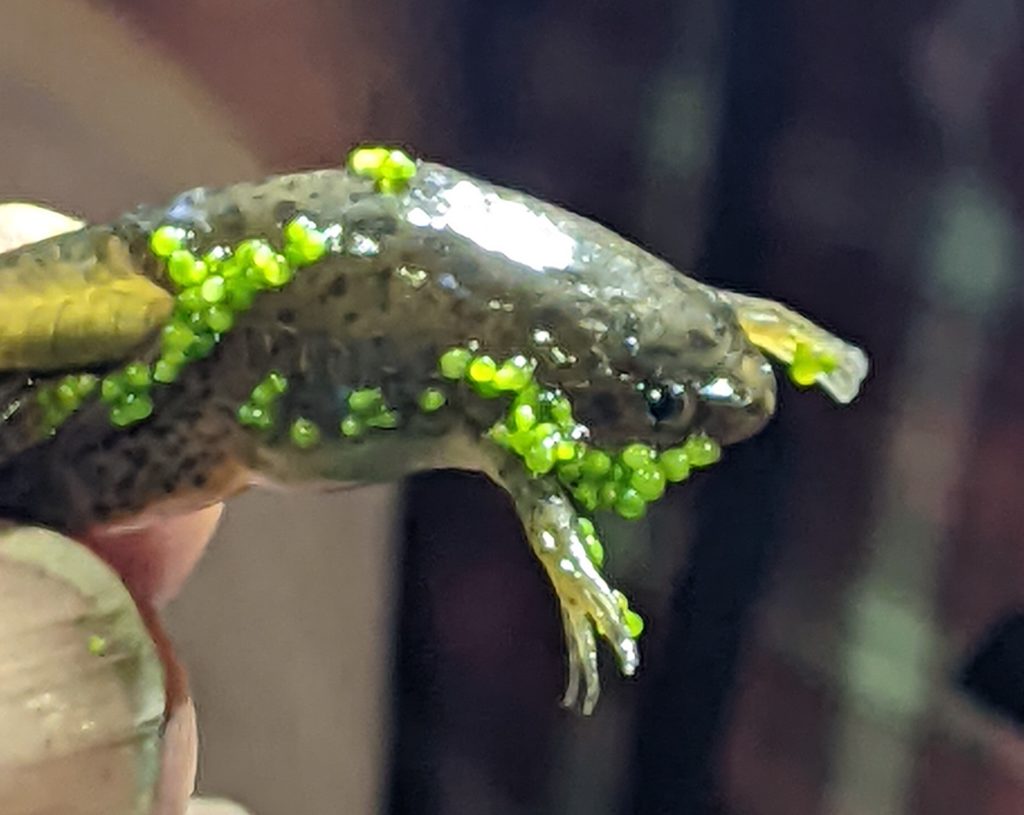
Lake Victoria clawed frog, Xenopus victorianus

